Art & Exhibitions
Which Artists Are Headed to the Venice Biennale in 2024? Here’s an Up-to-the-Minute List of All the National Pavilions Announced So Far
Keep checking back for updates as more participating artists are announced.

Keep checking back for updates as more participating artists are announced.

Artnet News

As anticipation builds ahead of next year’s 60th Venice Biennale, which runs from April 20 to November 24, 2024, news is finally emerging about what audiences should expect. Last month, the driving theme of “Foreigners Everywhere” was announced by chief curator Adriano Pedrosa. Not shying from a politically-loaded term, he hopes that the main exhibition will reflect on themes of migration and exile, as well as diasporic and Indigenous experiences, including marginalization and otherness more generally. “Foreign” forms and styles will also be given a platform, specifically the less-represented modernist movements that were made or reinvented in the Global South.
While we wait to see which artists Pedrosa plans to spotlight with this intriguingly open-ended theme, a steady stream of national pavilion announcements reminds us that the Venice Biennale has long served as a meeting place for “foreigners” from across the globe. We will keep updating this list as more nations announce their artists, curators, themes, and venues.
Updated on March 15th.
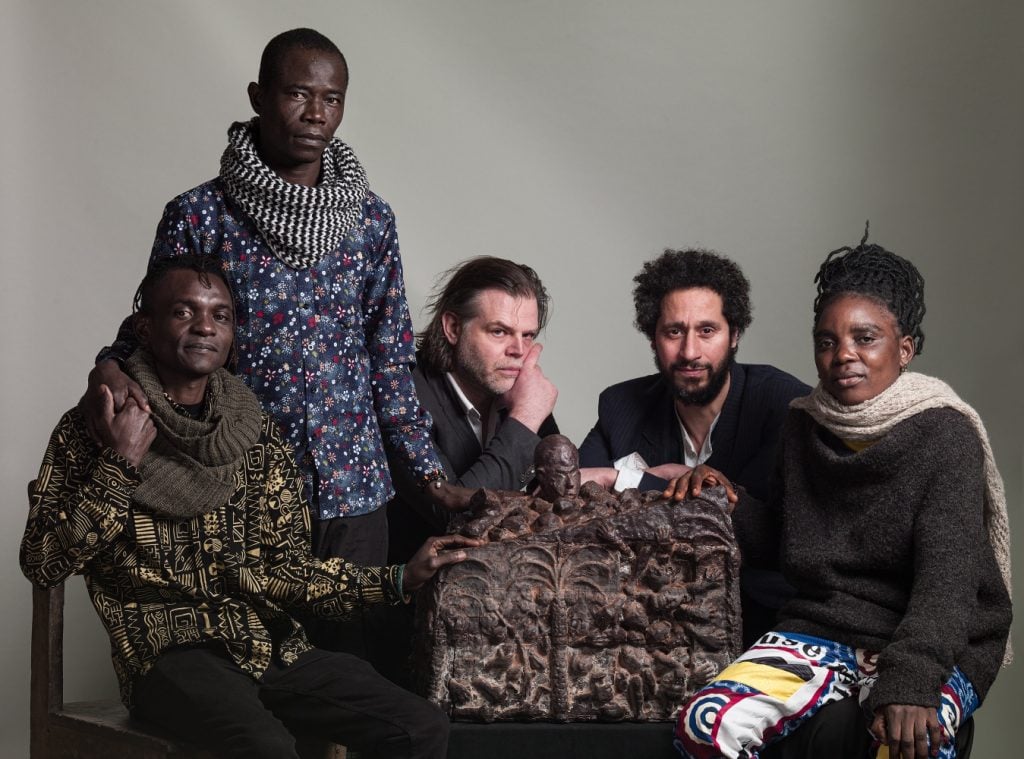
F.l.t.r. Ced’art Tamasala, Matthieu Kasiama Kilapi, Hicham Khalidi, Lisette Mbuku Kimpala, all members of CATPC, with Renzo Martens. Photo: © Koos Breukel, 2023.
Artist: Renzo Martens and members of the art collective Cercle d’Art des Travailleurs de Plantation Congolaise (CATPC)
Curator: Hicham Khalidi
Venue: Giardini and the “White Cube” gallery in Lusanga, the DRC
What to know: The Cercle d’Art des Travailleurs de Plantation Congolaise (CATPC) is a group of Congolese artists who previously worked on a plantation owned by the consumer goods giant Unilever but now produce chocolate sculptures to sell to Western buyers. The Dutch artist Renzo Martens helped recruit the group’s members and has been a long time facilitator of their global network through his Institute of Human Activities.
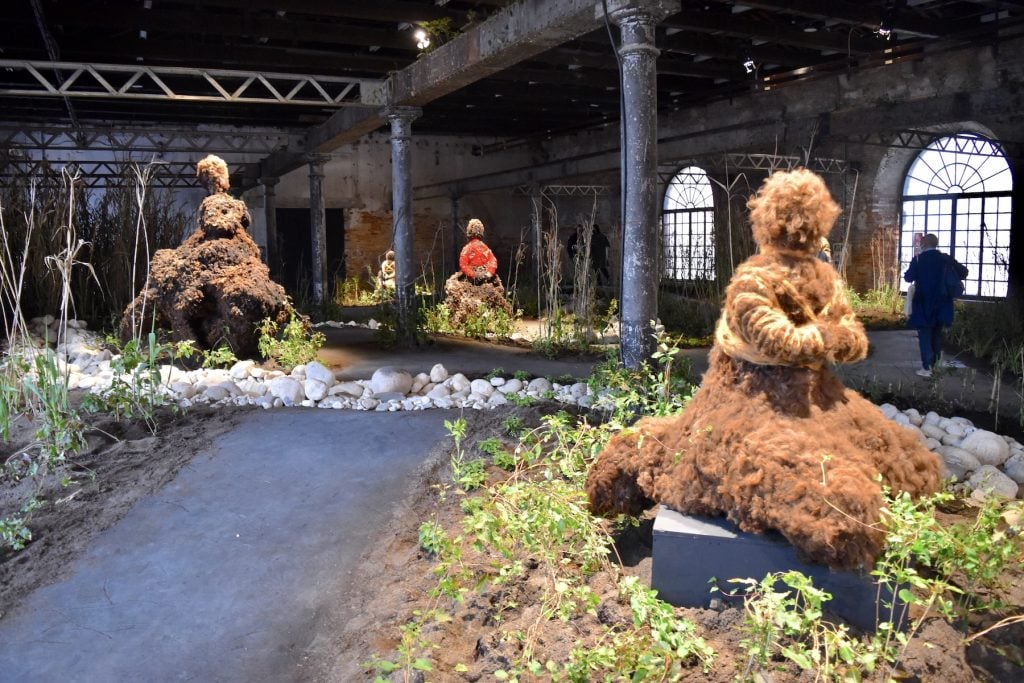
Precious Okoyomon, one of the artists who will represent Nigeria at the 2024 Venice Biennale, also participated in the 2022 Venice Biennale show with Earth Before the End of the World (2022). Photo by Ben Davis.
Artist: Tunji Adeniyi-Jones, Ndidi Dike, Onyeka Igwe, and Toyin Ojih Odutola; Abraham Oghobase, Precious Okoyomon, Yinka Shonibare, and Fatimah Tuggar
Curator: Aindrea Emelife
Venue: Palazzo Canal in Dorsoduro near the Gallerie dell’Accademia
What to know: The exhibition “Nigeria Imaginary” will feature an intergenerational group of nine artists from Nigeria or its diaspora. Its an all-star cast, includes Precious Okoyomon, who had one of the more talked about installations at “The Milk of Dreams” Venice Biennale exhibition at the Arsenale. Aindrea Emelife, curator of contemporary and modern art at EMOWAA, the planned art museum in Benin City, says her show will provide “will explore the many Nigerias that live in our minds, curated to capture a sense of optimism imbued in inherited and collective cultural history.”
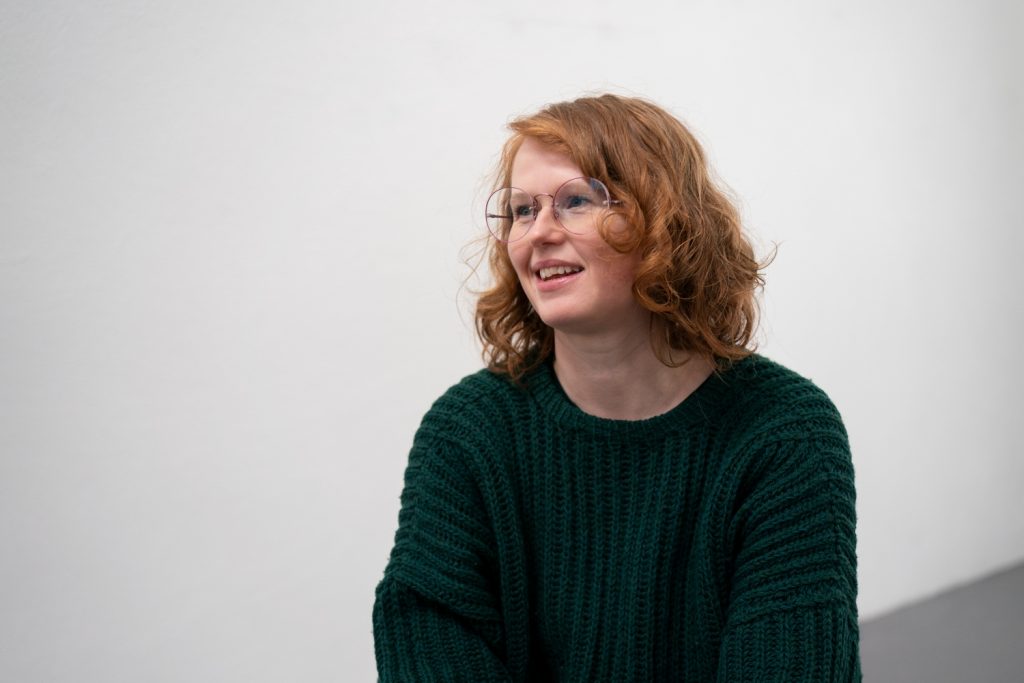
Hildigunnur Birgisdóttir. Photo: Eyþór Árnason.
Artist: Hildigunnur Birgisdóttir
Curator: Dan Byers
Venue: Arsenale
What to know: The Icelandic sculptor’s playful use of everyday objects like computer keys, post-it notes and scraps of paper decontextualizes the items so that they lose their more obvious meaning and utility and, instead, we are prompted to re-evaluate them. In this way, overly-familiar forms take on a new sculptural vigor. Her exhibition “That’s a Very Large Number – A Com-Merz-Bau” plays on the Dadaist idea of the “Merzbau” first invented by Kurt Schwitters, who made collages out of found material. Birgisdóttir’s contemporary reinvention will use cast-off commercial fabrics and other detritus to respond to the architecture of the pavilion.
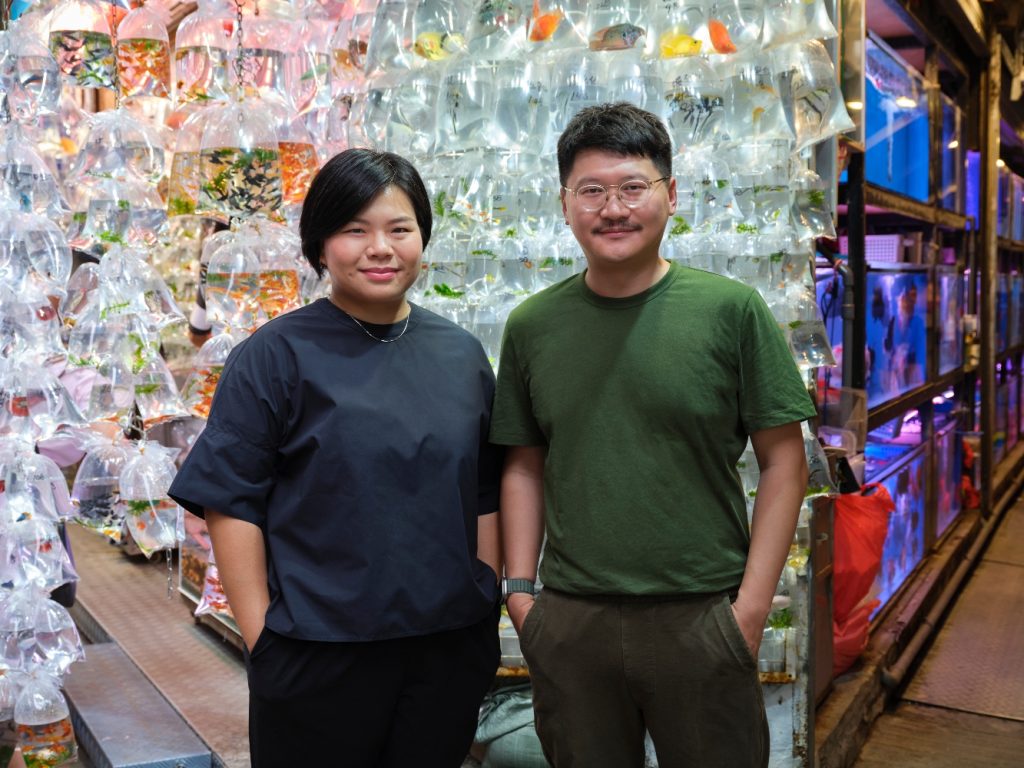
Curator Olivia Chow and artist Trevor Yeung will represent Hong Kong at next year’s Venice Biennale. Photo: South Ho, courtesy of M+, Hong Kong.
Artist: Trevor Yeung
Curator: Olivia Chow
Venue: Arsenale
What to know: The installation artist is drawn to organically occurring forms and structures within the natural world, but he isn’t afraid to mix up botanical influences with man-made objects. Many will know him for his lamps, in which wires and bulbs have been tangled up with the leaves and stems of plants.
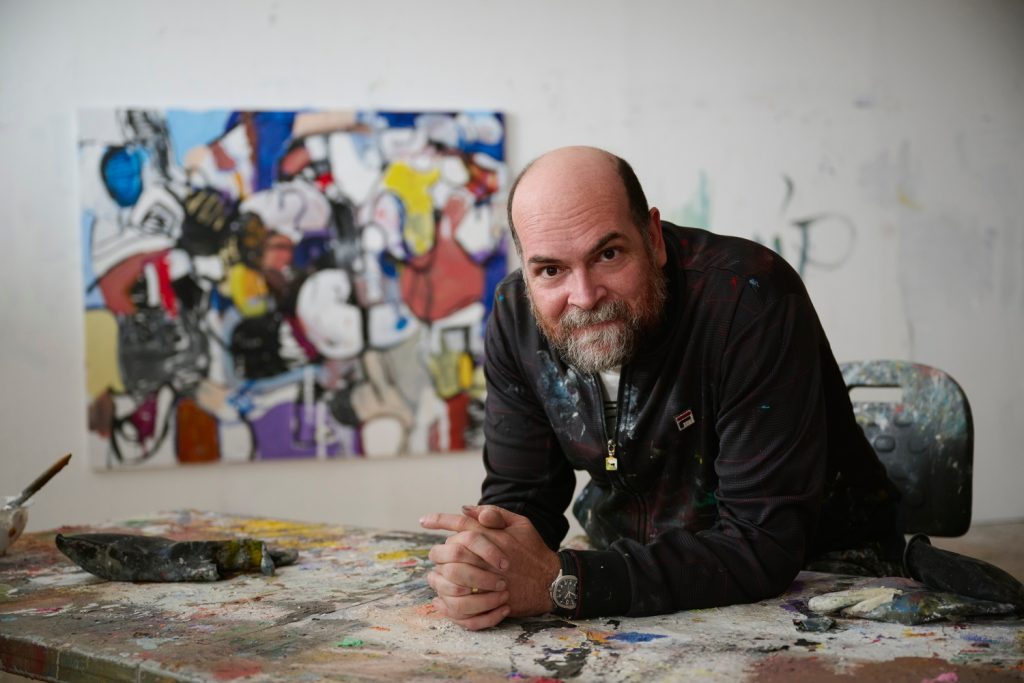
Eddie Martinez, 2024. Photo: Jason Schmidt.
Artist: Eddie Martinez
Curator: Alison M. Gingeras
Venue:
What to know: San Marino has often invited artists of different nationalities to represent the tiny country (the world’s fifth smallest, but one of Europe’s oldest republics) at Venice, as a tribute to its history of providing a refuge to foreigners. This year they have announced the American experimental painter Eddie Martinez who will present new works in the exhibition “Nomader.”
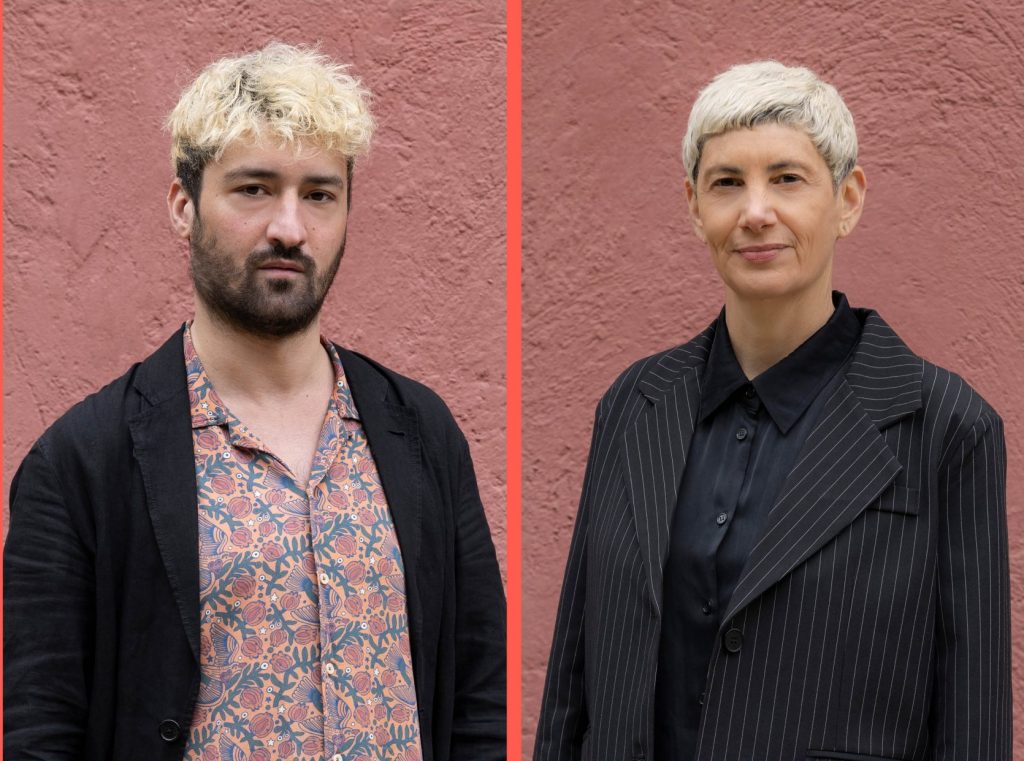
Ersan Mondtag (right) and Yael Bartana will represent Germany in Venice Biennale 2024, with their works on show at the German pavilion in the Giardini. Photo: Andrea Rossetti.
Artist: Yael Bartana and Esran Mondtag
Curator: Çagla Ilk
Venue: Giardini
What to know: The Israeli artist and filmmaker Yael Bartana is partnering with German theatre director and designer Esran Mondtag to present “Thresholds,” an exhibition about what it means to inhabit the present as a space suspended between the past and the future. Bartana explores the feeling of living in a present that is almost apocalyptic, and imagines possible futures both dystopic and uptopic in nature. Mondtag ventures into the past through immersive sets that speak to how we remember the past.
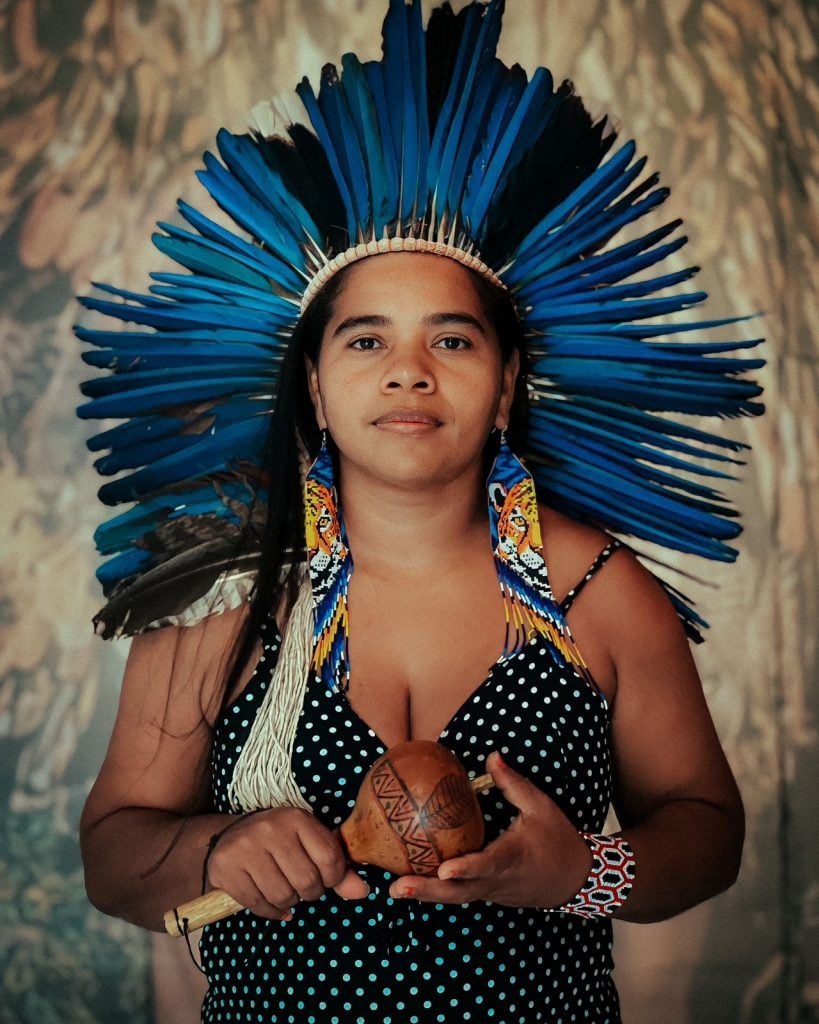
Glicéria Tupinambá, Courtesy Fundação Bienal de São Paulo.
Artist: Glicéria Tupinambá in collaboration with the Tupinambá Community of Serra do Padeiro and Olivença, Bahia; Olinda Tupinambá; and Ziel Karapotó
Curator: Arissana Pataxó, Denilson Baniwa and Gustavo Caboco Wapichana
Venue: Giardini
What to know: The indigenous artist and activist Glicéria Tupinambá will be renaming the Brazil Pavilion the Hãhãwpuá Pavilion, a term used by the Pataxó people to refer to the territory that, after colonization, became known as Brazil. Her exhibition Ka’a Pûera: we are walking birds will address the reclamation of ancestral territory and the importance of living in harmony with nature. You can find out more about the exhibition here.
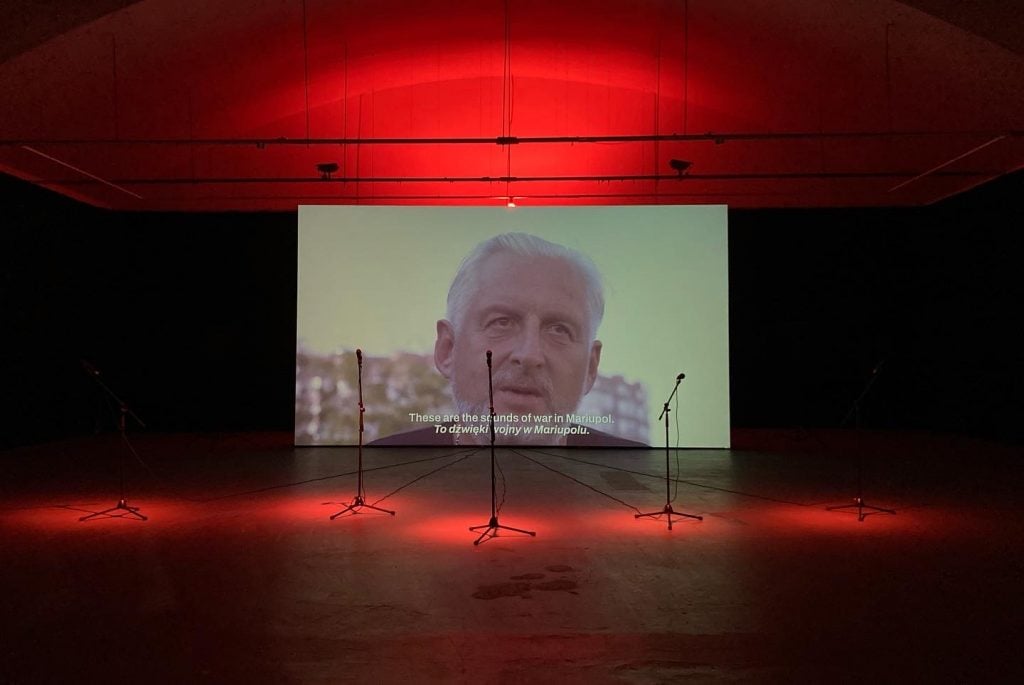
Open Group, Repeat After Me (2022) installation view at Labirynt Gallery in Lublin, Poland. Photo: Bartosz Górka and Emilia Lipa.
Artist: Open Group
Curator: Marta Chizh
Venue: Giardini
What to know: The Polish pavilion has been the subject of some controversy. A previous right-wing populist government originally submitted an exhibition of paintings by Ignacy Czwartos that reflected on the ways in which Germany and Russia had mistreated Poland during the 20th century. After a new centrist coalition took power at the end of 2023, the submission was switched to Open Group’s Repeat After Me (2022). The performance video with a karaoke-style installation features Ukrainian refugees sharing their experiences of Russia’s war on Ukraine through spoken dialogue and by immersing viewers in the sounds of shelling, gunfire, and air raid sirens.
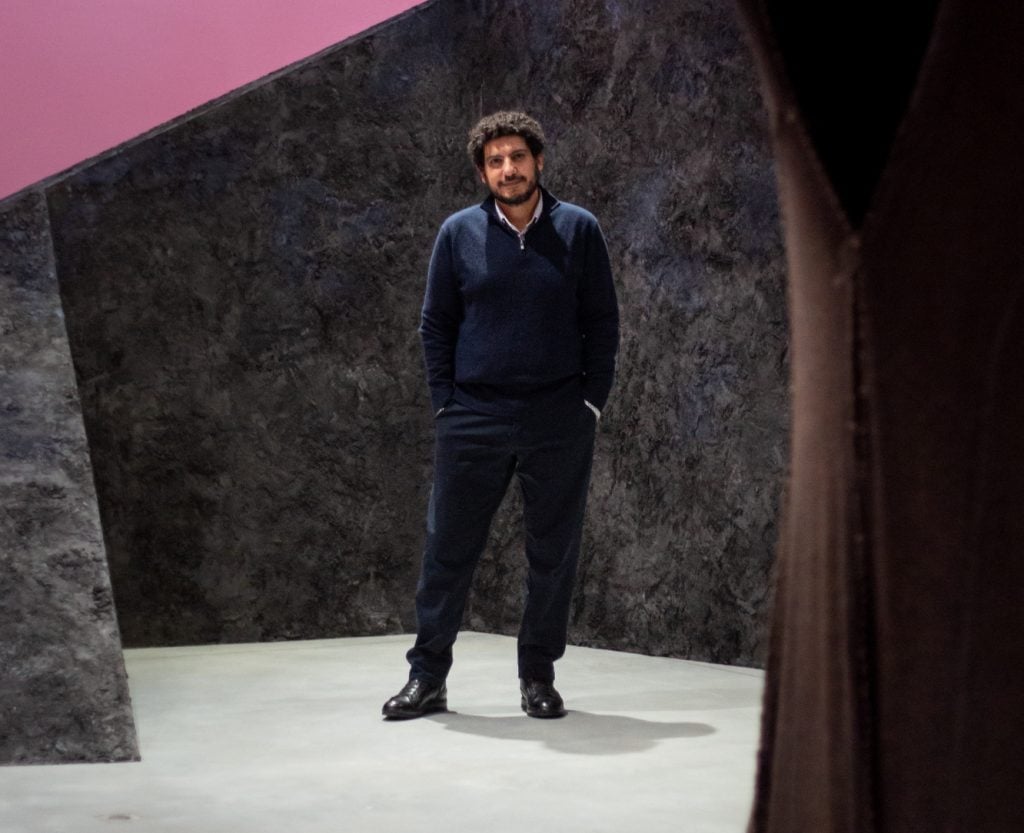
Wael Shawky. Photo: Lien Wevers, courtesy M Leuven.
Artist: Wael Shawky
Curator:
Venue: Giardini
What to know: Embracing immersive sculptural installations, performance, film, and painting, Shawky weaves complex stories inspired by historical folklore to raise the veil on contemporary life, with special attention on nationalism, identity, and the repercussions of colonial history. Fans of Shawky will also be thrilled to learn that a second solo exhibition “I Am Hymns of The New Temples” will open at Venice’s Museo Palazzo Grimani on April 17.
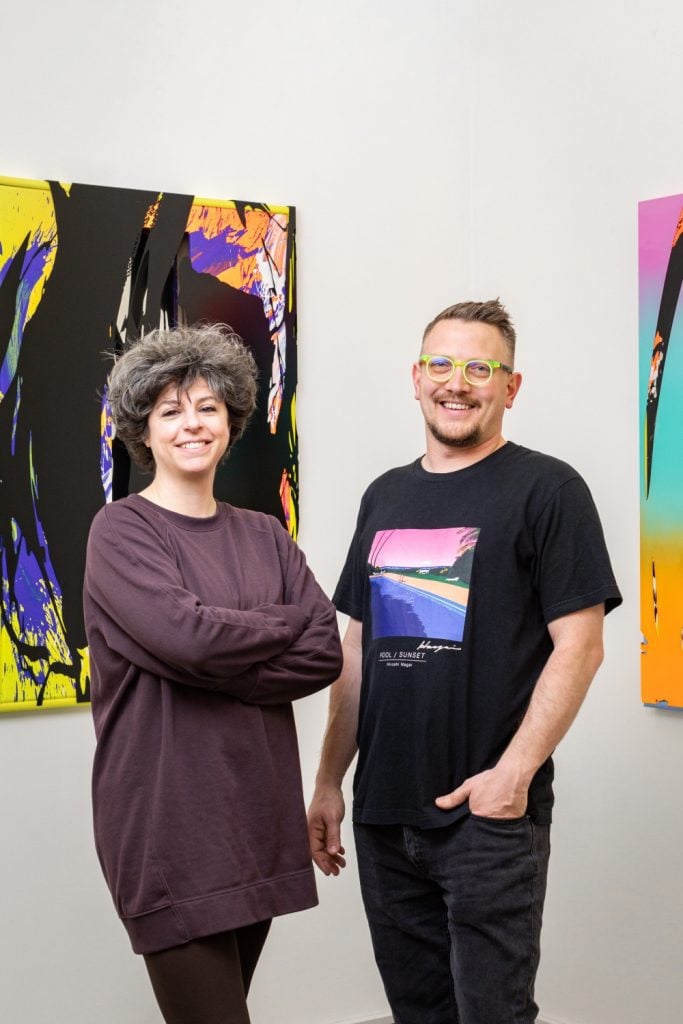
Márton Nemes and curator Rona Kopeczky. Photo: Dávid Tóth.
Artist: Márton Nemes
Curator: Rona Kopeczky
Venue: Giardini
What to know: Based in New York but born in Budapest, Nemes has made a name for eye-catchingly colorful abstract canvases that, in their florescence, recall street art and rave culture. These works were inspired by the artist’s own experiences immersing himself in London’s underground scene.
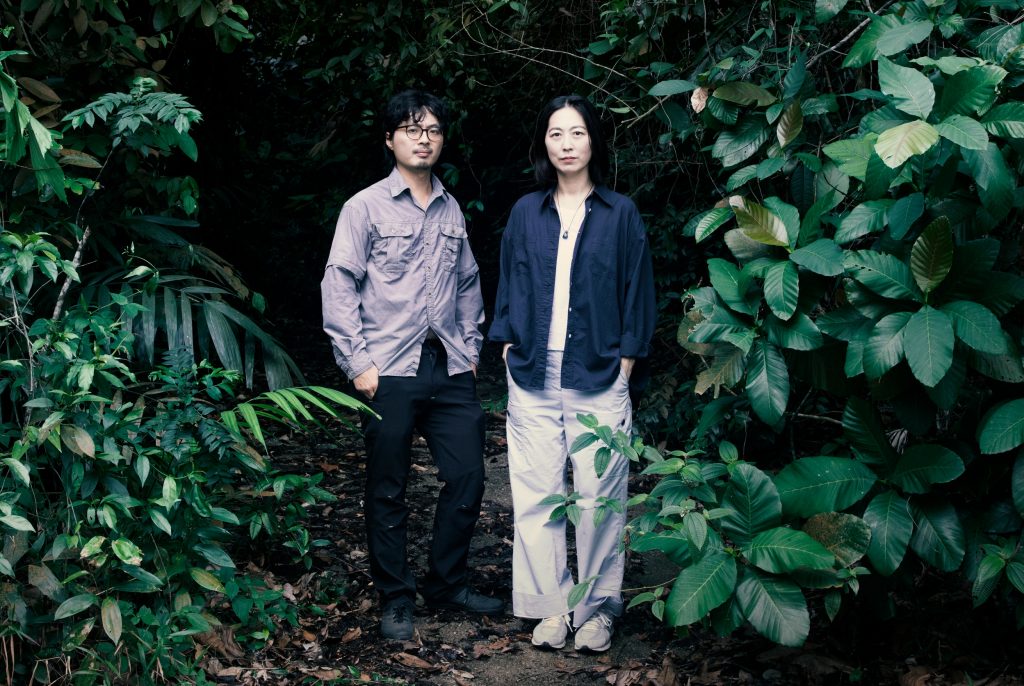
Artist Robert Zhao Renhui with curator Haeju Kim, 2023. Image courtesy of the artist.
Artist: Robert Zhao Renhui
Curator: Haeju Kim
Venue: Arsenale
What to know: Through a considerable media including architectural installation, photography, and performance, Zhao examines our relationship with the natural world and explores the possibilities for future regeneration. For example, The Forest Institute (2022), which was exhibited in the arts district of Gillman Barracks in 2022, presented the artist’s research about the surrounding secondary forest that regrew after human interference. Zhao’s years of ecological research will come together to inform a new immersive installation at Venice.
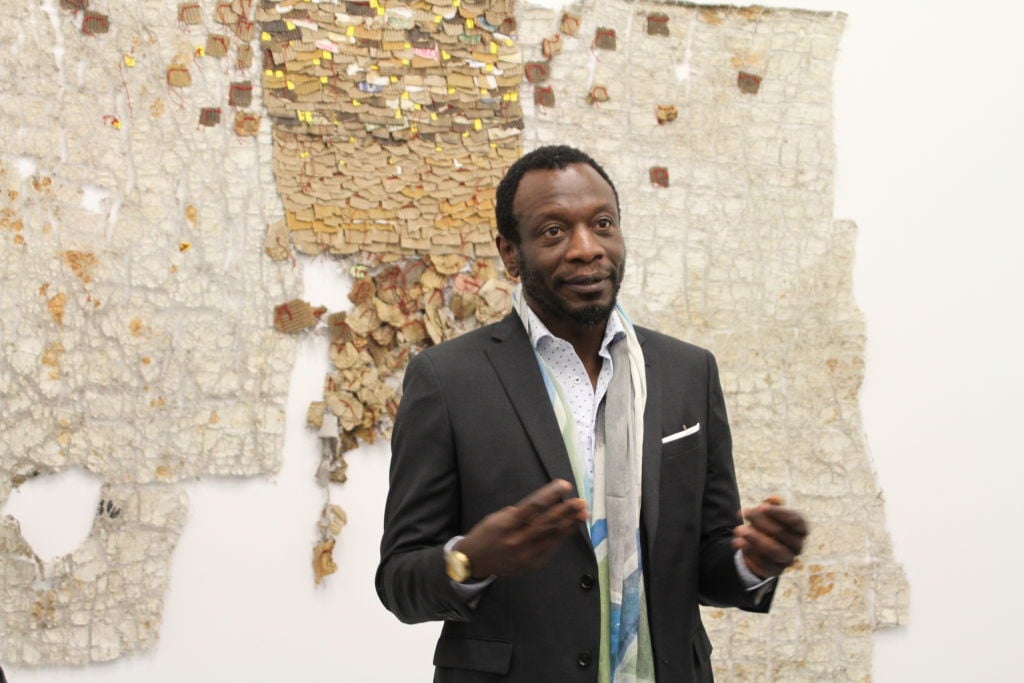
Curator Azu Nwagbogu at the Zeitz Museum of Contemporary Art Africa (MOCAA) in Zimbabwe. Photo by Kristin Palitza/picture alliance via Getty Images.
Artist: Moufouli Bello, Chloé Quenum, Ishola Akpo, and Romuald Hazoumè.
Curator: Azu Nwagbogu, Yassine Lassissi, and Franck Houndégla
Venue: Yet to be announced
What to know: The country’s debut pavilion is intended to promote the country’s cultural heritage and “diplomacy around the restitution of Benin’s royal treasures,” which over the past year alone has seen prized collections of bronzes be repatriated by several major Western museums. The curators have planed “Everything Precious is Fragile,” an exhibition that will touch on the histories of colonialism and the slave trade, on restitution, and the feminist idea, borrowed from Gèlèdé philosophy, of “rematriation.”
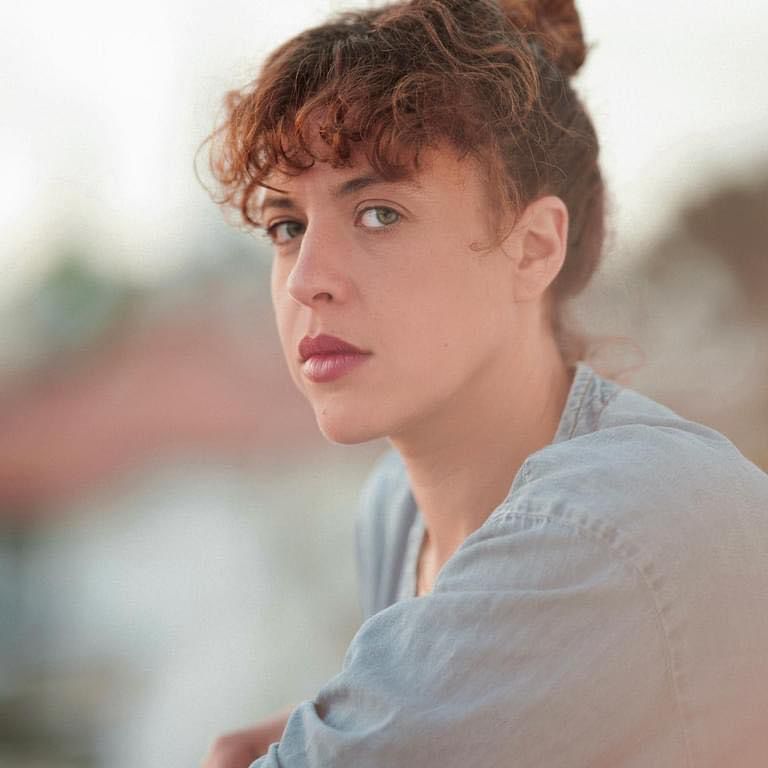
Ruth Patir. Photo: Goni Riskin.
Artist: Ruth Patir
Curator: Mira Lapidot and Tamar Margalit
Venue: Giardini
What to know: The New York-born, Tel Aviv-based film director’s upcoming project Motherland will be her most ambitious yet, folding her own highly personal experiences of egg-freezing into the restoration process of an ancient fertility figurine. To tell this story, Patir is converting Israel’s pavilion into a “FertilityPavilion,” and her videos will extend far beyond the confines of the screen into especially-constructed immersive environments intended to recreate the home, the clinic, the museum, and an archaeological site.
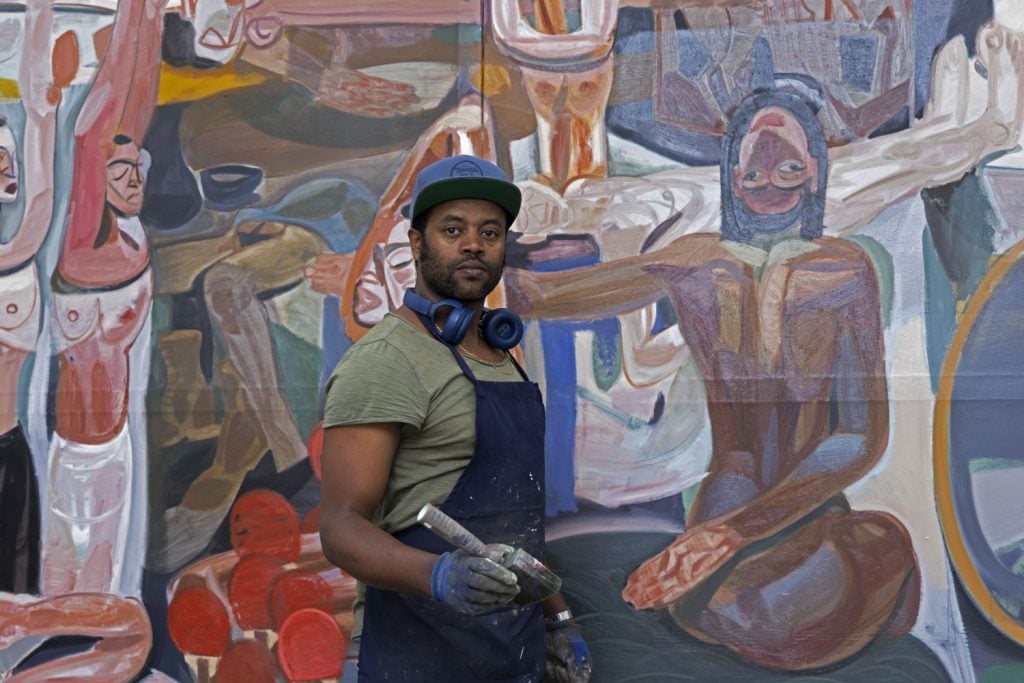
Tesfaye Urgessa. Photo: Kameron Cooper, courtesy of Tesfaye Urgessa and Saatchi Yates.
Artist: Tesfaye Urgessa
Curators: Lemn Sissay
Venue: Palazzo Bolani
What to know: Tesfaye Urgessa will represent Ethiopia for the country’s first-ever national pavilion with the exhibition “Prejudice and Belonging.” He is known for painting classicized human figures, often distorted or entwined with each other in domestic settings, that invite the viewer to contemplate the subjects’ ambiguous psychological states.
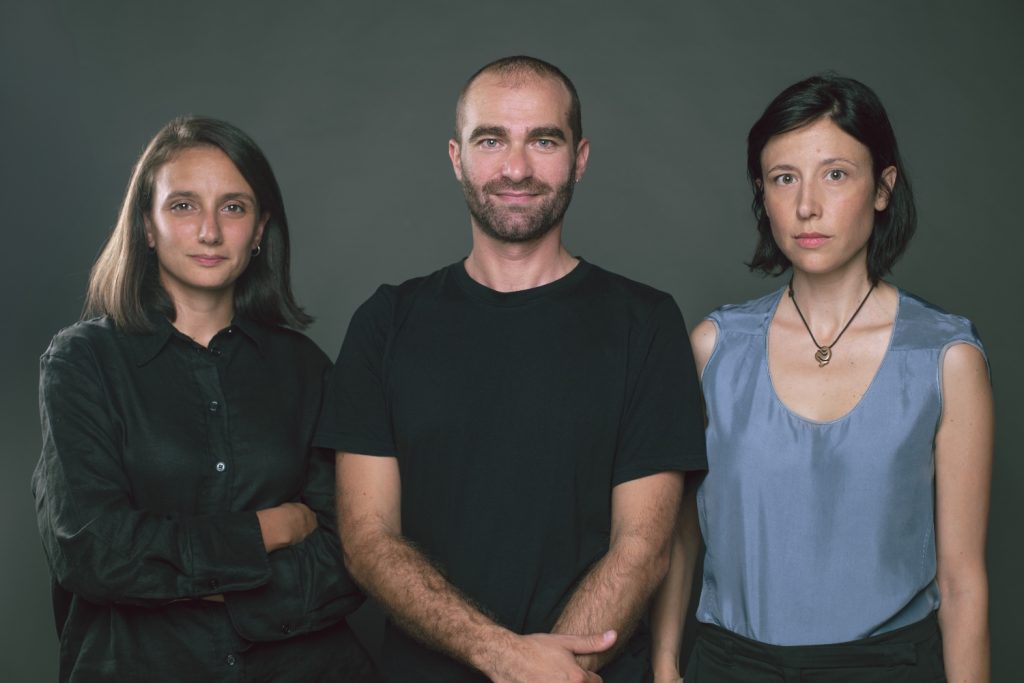
Matthew Attard, artist for the Malta Pavilion 2024 with curators Elyse Tonna and Sara Dolfi Agostini. Photo: Therese Debono.
Artist: Matthew Attard
Curators: Sara Dolfi Agostini and Elyse Tonna
Venue: Arsenale
What to know: This pavilion should stand out for its use of A.I., which in 2024 remains a hot topic in the art world. “I Will Follow the Ship” bridges a fascination with historical ship graffiti—markings made by sailors on the walls of Matese churches that reflect cross-cultural ancient folklore—and the ways in which A.I. can be used to create new images out of what has come before. Questions of authorship will therefore be central to Attard’s exploration.
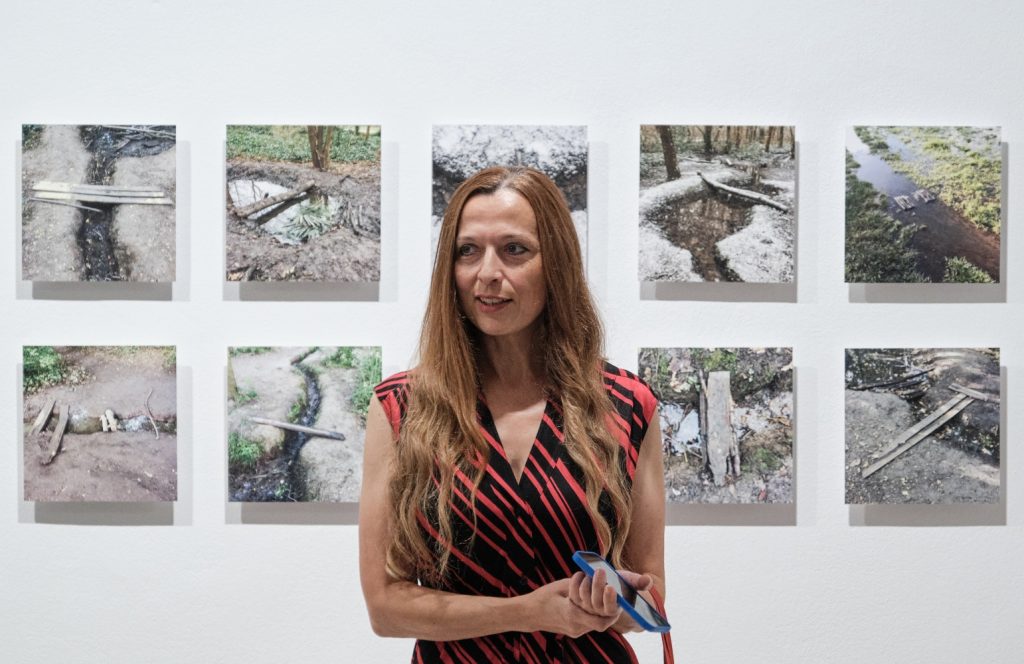
Vlatka Horvat. Photo: Vanja Babic.
Artist: Vlatka Horvat
Curator: Antonia Majača
Venue: Fàbrica 33
What to know: The London-based multidisciplinary artist has planned to share the spotlight with a roster of other artists for her forthcoming installation By the Means at Hand. The group of collaborators that Horvat has invited are all members of a diaspora, and they will enter into a reciprocal exchange with the artist by which their respective artworks are traded and will be transported between their location and Venice with the help of friends, acquaintances, or even traveling strangers. The work relies on informal social networks and highlights the role of migration in our global society.
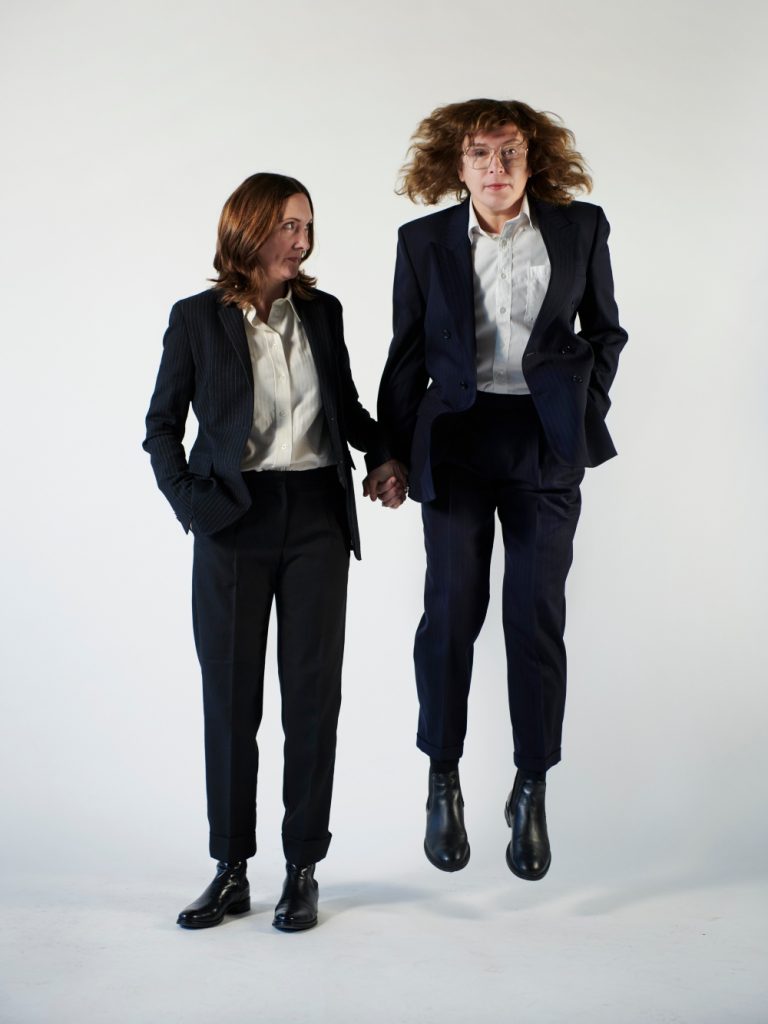
Gabriele Spindler and Anna Jermolaewa. Photo: © Maria Ziegelböck.
Artist: Anna Jermolaewa
Curator: Gabriele Spindler
Venue: Giardini
What to know: The Russian-born conceptual artist fled the Soviet Union in 1989, having been a founding member of the country’s first opposition party. She now lives and works in Vienna and is a professor of Experimental Art at the University of Art and Design Linz. She previously exhibited the video work Chicken Triptych at the 48th Venice Biennale in 1999.
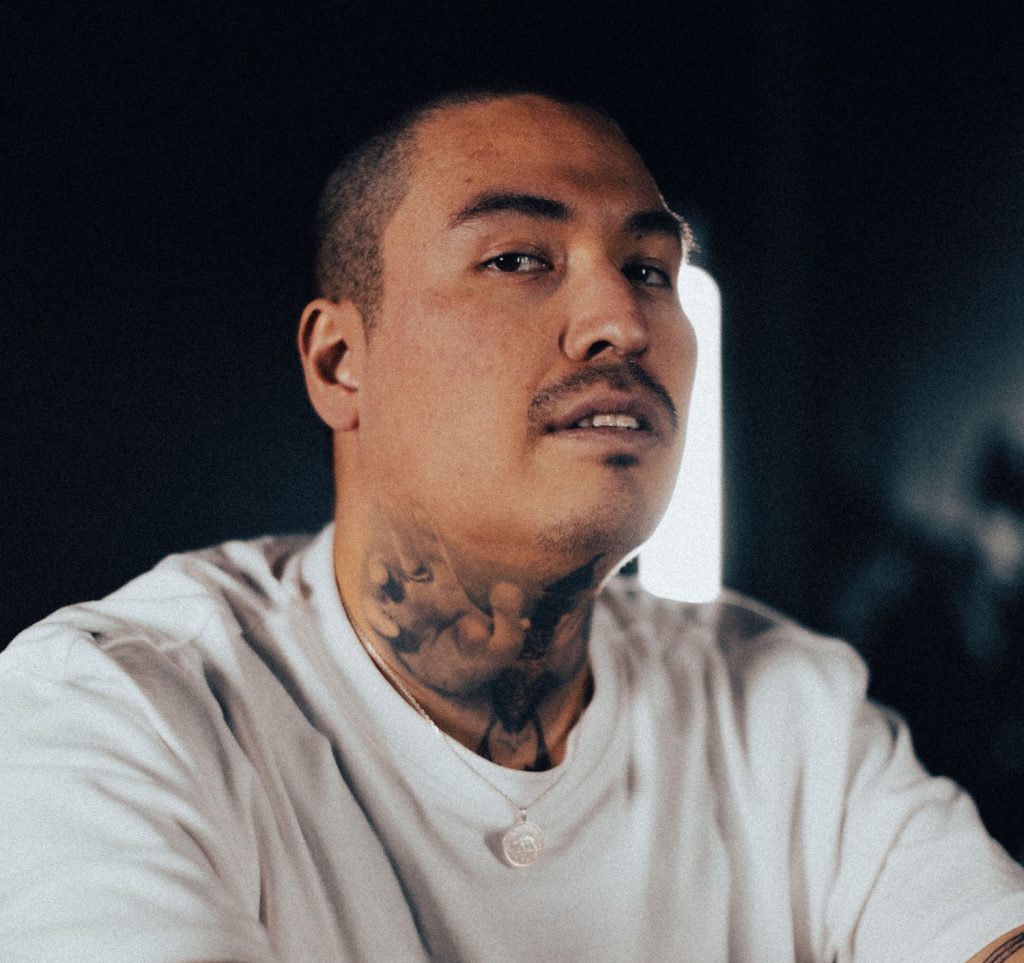
Portrait of Inuuteq Storch. Photo: Arny Koor Mogensen, Bolt Lamar.
Artist: Inuuteq Storch
Curator: Louise Wolthers
Venue: Giardini
What to know: The Greenlandic artist Inuuteq Storch’s exhibition “Rise of the Sunken Sun” will present a series of photographs about Greenlandic identity but through the lens of Indigenous people rather than the flattening lens of outsiders. Archival images by John Møller (1867–1935) will be interspersed with Storch’s family photos and snapshots of everyday life in his hometown of Sisimiut. Greenland is an autonomous territory inside the Kingdom of Denmark.

Alioune Diagne. Photo courtesy of Templon Gallery.
Artist: Alioune Diagne
Curator: Massamba Mbaye
Venue: Arsenale
What to know: The painter has established a semi-abstracted signature style by using painstakingly repeated script-like motifs to produce lively and colorful street scenes and figure studies that retain a certain hazy ambiguity. Not much has yet been revealed about his plans for Venice, but he moved by themes of everyday life, the works of society, and cultural heritage.
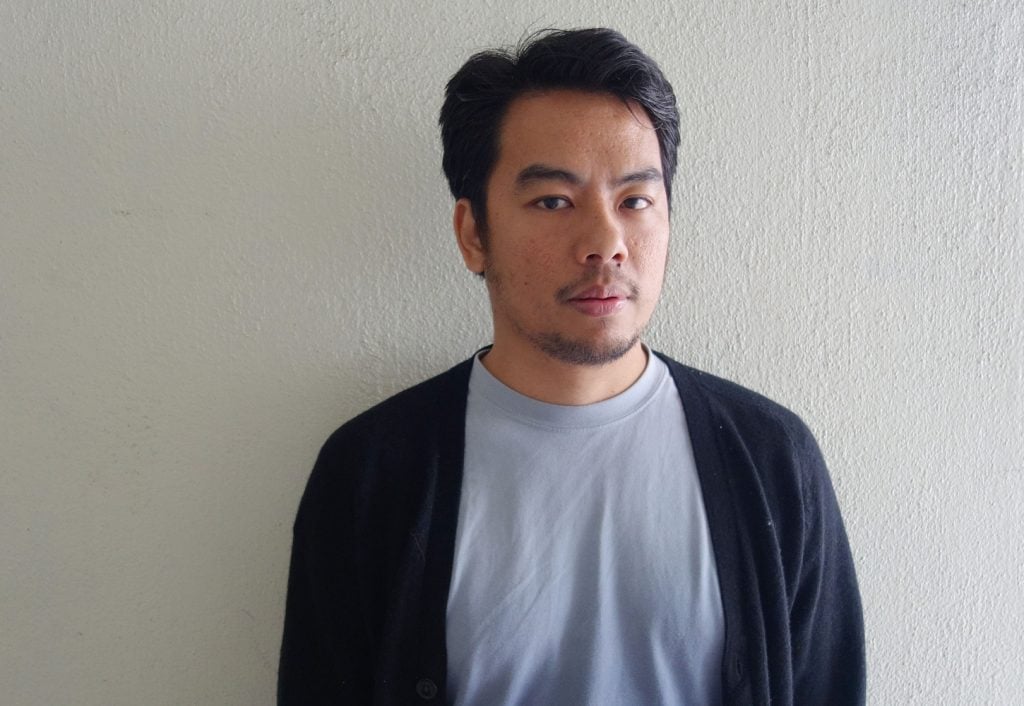
Mark Salvatus. Photo courtesy of Sharjah Art Foundation.
Artist: Mark Salvatus
Curator: Carlos Quijon Jr.
Venue: Arsenale
What to know: Based in Quezon City, Salvatus has named his overall artistic practice “Salvage Projects” ever since 2006. The term refers both to his own name and the act of sorting through the leftover fragments and traces of society and his country’s history, which the artist does through a wide range of media including installations, video and photography. The exhibition Behind the curtain of this age will apparently explore “currents of mysticism and modernity, the deep past and the looming future” via an examination of the three-peaked volcano and major landmark Mount Banahaw.
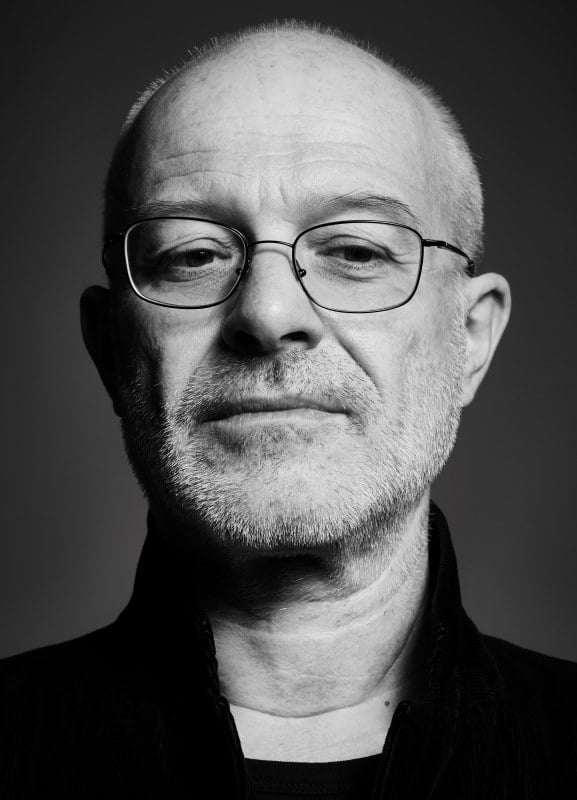
Massimo Bartolini. Photo courtesy Frith Street Gallery.
Artist: Massimo Bartolini
Curator: Luca Cerizza
Venue: Giardini
What to know: Not much is yet know about Due qui / To Hear, a special installation that Bartolini is making in collaboration with musicians and writers, but judging by his past work it is likely to be a multi-sensory experience that channels a unique energy between the performers, the viewers and the space.
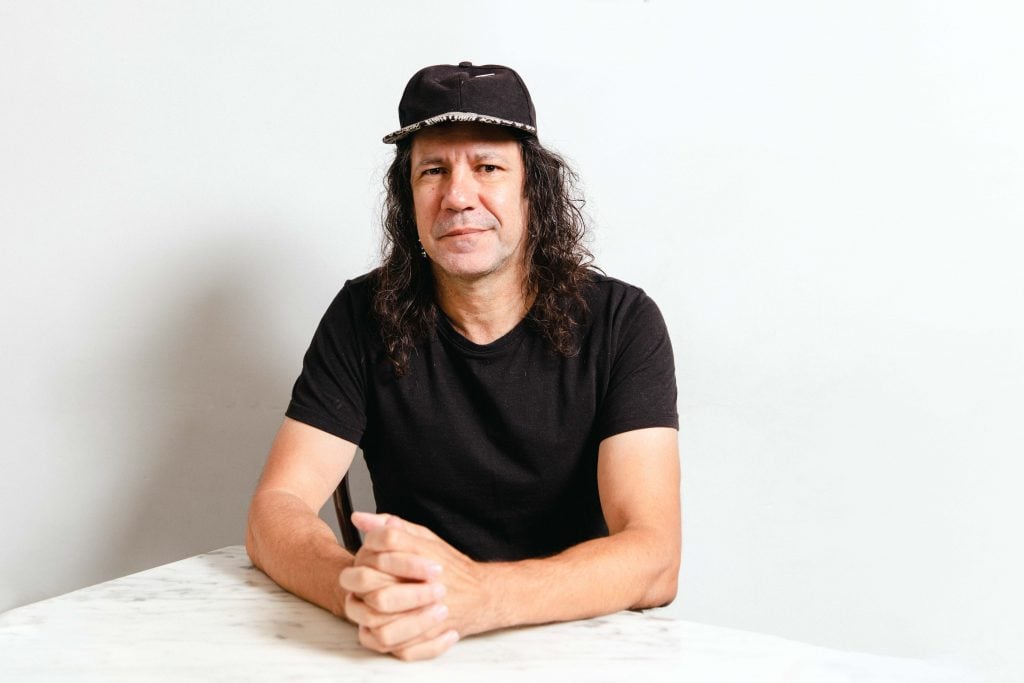
Archie Moore. Photo: Anna Hay.
Artist: Archie Moore
Curator: Ellie Buttorse
Venue: Giardini
What to know: The First Nations artist from Queensland creates work that gets to the heart of Australia’s colonial past and its contemporary aftershocks, from everyday racism to the glaring discrepancy between the country’s official history and its citizens’ living memory. So far he has only teased a few details about what the new work might address by mentioning that his family history is a rich subject he has so far avoided.
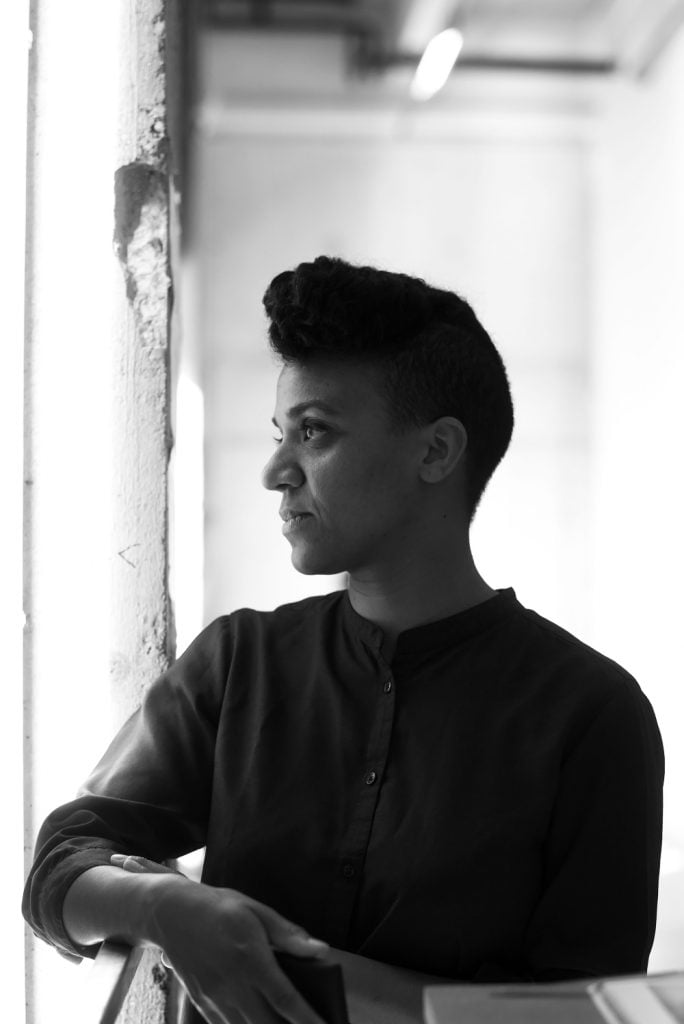
Kapwani Kiwanga. Photo: © Bertille Chéret.
Artist: Kapwani Kipwanga
Curator: Gaëtane Verna
Venue: Giardini
What to know: Based in Paris, Kipwanga is an artist who wears many hats, including that of an anthropologist, having studied the subject at McGill University in Montreal. This interest has informed many of her works, which take the form of archival or documentary research—whether about real events or imagined futures inspired by the Afrofuturism movement.
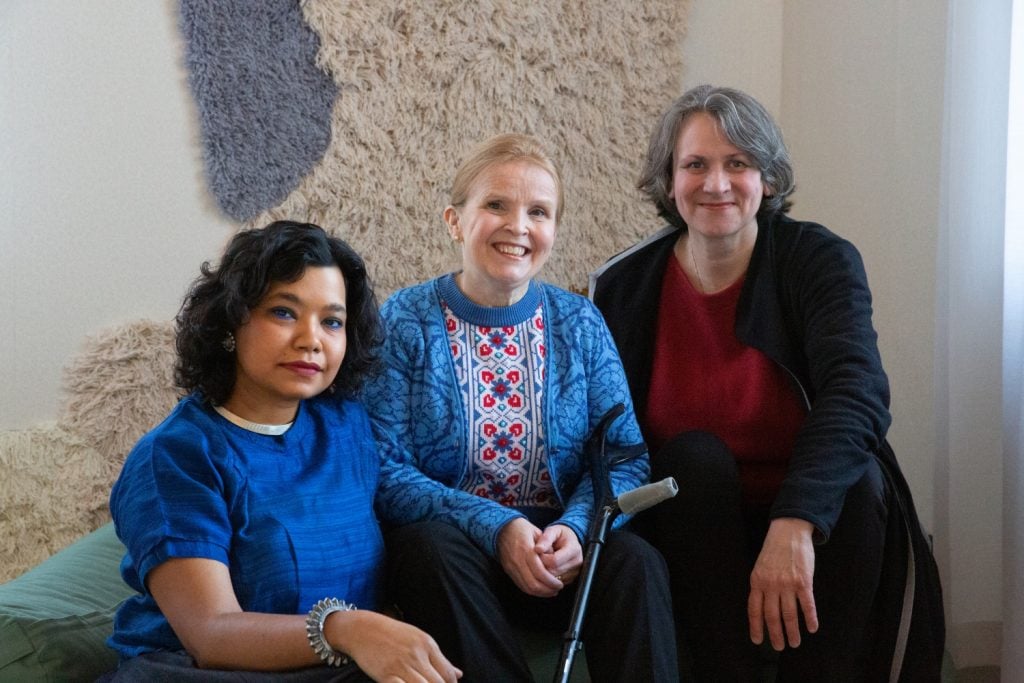
Vidha Saumya, Jenni-Juulia Wallinheimo-Heimonen and Pia Lindman. Photo: Jo Hislop, courtesy of Frame Finland.
Artist: Pia Lindman, Vidha Saumya, and Jenni-Juulia Wallinheimo-Heimonen
Curator: Yvonne Billimore and Jussi Koitela
Venue: Giardini
What to know: The three artists chosen to represent Finland are united by their multidisciplinary approaches that encompass textiles, performance, spoken work, sculpture, and drawing. Their exhibition “The pleasures we choose” was inspired by the sharing of personal experience and how these emancipate us to reconsider society’s expectations.
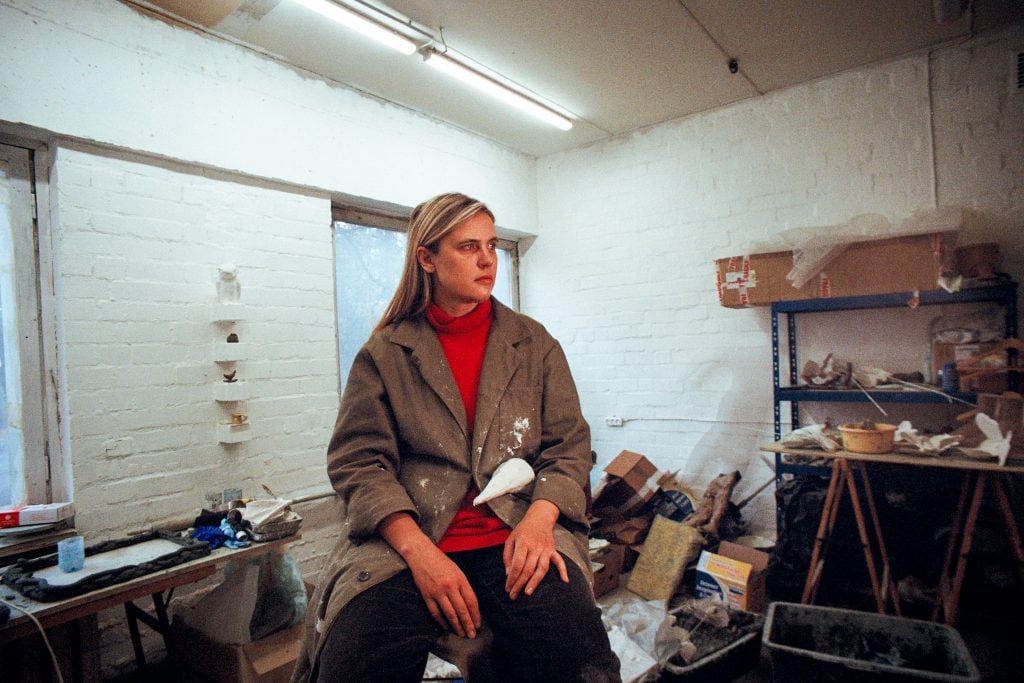
Edith Karlson. Photo: Marii Kiisk/Müürileht.
Artist: Edith Karlson
Curator: Geir Haraldseth
Venue: Giardini
What to know: The Tallin-based sculptor has a knack of bringing her installations to life with animal protagonists–like birds, dogs, bears, and lions—that are able to evoke a distinctly human feelings or emotions. Next year, she plans to expand her vision by turning Estonia’s pavilion into a fantastical, immersive space that doesn’t resemble a typical gallery and welcomes audience participation. Reflecting on the state of the world in the hands of humans, she said: “Nothing will ever change, and it’s both tragic and comic, serious and laughable, terrifying as hell and amusing as a circus.”
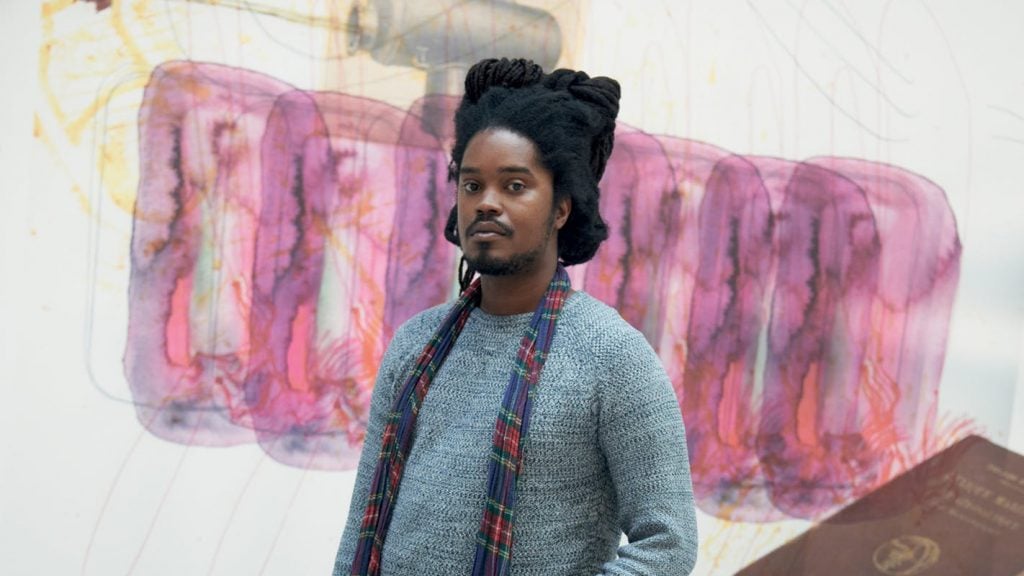
Artist Julien Creuzet. Photo: © Spela Kasal, courtesy of Document Space.
Artist: Julien Creuzet
Curator: Yet to be announced
Venue: Giardini
What to know: Born in Martinique, the Paris-based French-Caribbean artist and poet weaves a natural lyricism into his suspended sculptures and wall hangings, which are made of out found materials and waste. He is an avid follower of intellectuals like Édouard Glissant and Aimé Césaire, through which he examines his ancestral origins and diasporic experiences. Later this year, his work will also appear in the 35th São Paulo Bienial. for his show he will transform the pavilion with the use of fluids that echo the many canals that run through Venice. “What I want to offer visitors to this this Pavilion is a complex and sensory zone of confluence, a deeply lived experience,” Creuzet has commented. “For me, that is what this space is about. It is a crossway, a place where anything may be encountered, above all oneself.“
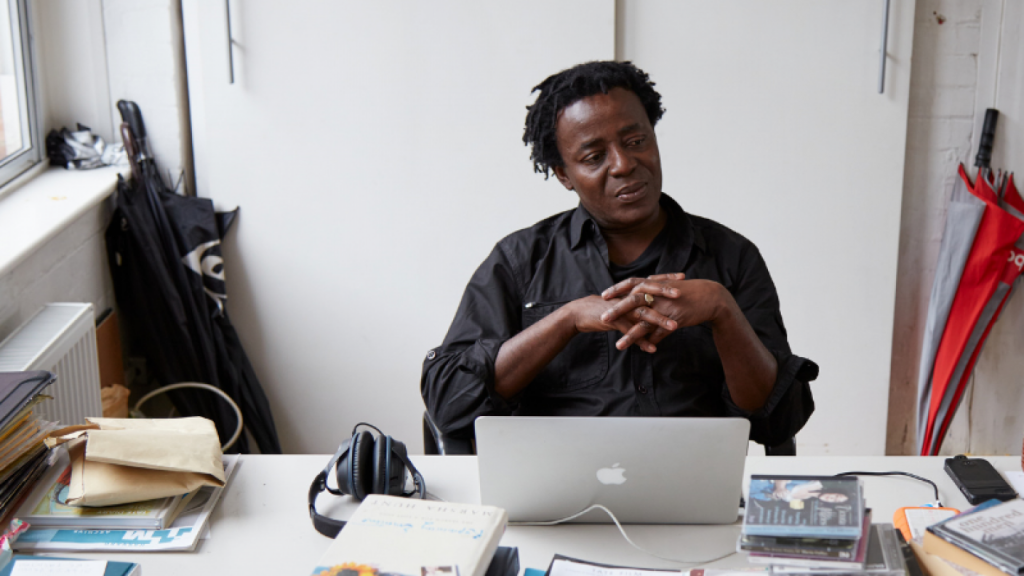
John Akomfrah at his London studio, 2016. Photo: © Jack Hems, courtesy of the British Council.
Artist: John Akomfrah
Curator: Yet to be announced
Venue: Giardini
What to know: Following up two prior appearances at the biennale–as part of the main exhibition in 2015 and representing Ghana in 2017—the London-based filmmaker has not yet revealed much about what audiences can expect this time around. Since co-founding the Black Audio Film Collective in 1982, Akomfrah is best known for documentaries like Seven Songs for Malcolm X (1993) and The Unfinished Conversation (2012), which examine Black history and identity, as well as Purple (2017), a sombre study of the effects of climate change.
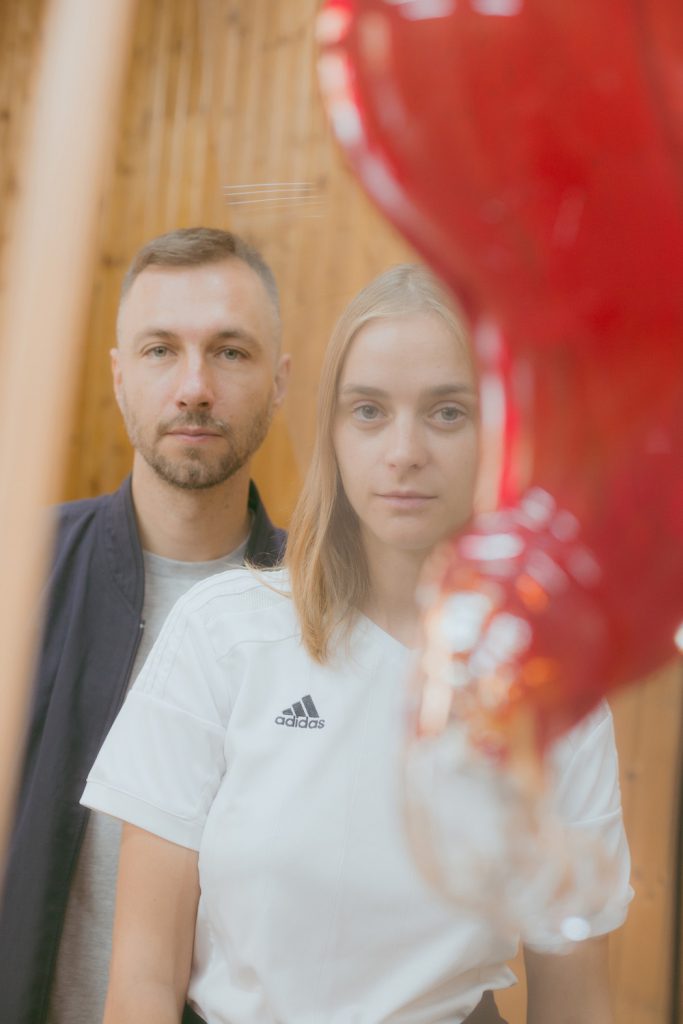
Pakui Hardware. Photo: Laura Schaeffer.
Artist: Pakui Hardware
Curator: Valentinas Klimašauskas and João Laia
Venue: Castello 3200
What to know: The artist duo—Neringa Cerniauskaite and Ugnius Gelguda—have announced the intriguing theme of “inflammations” for their exhibition next year, referring both to “human and planetary bodies.” Judging by their past work, however, we can almost certainly expect something wacky. We do know that the installation will include paintings by the late Lithuanian artist Marija Teresė Rožanskaitė whose “medical” paintings were Surrealist metaphors for the ills of Soviet society.
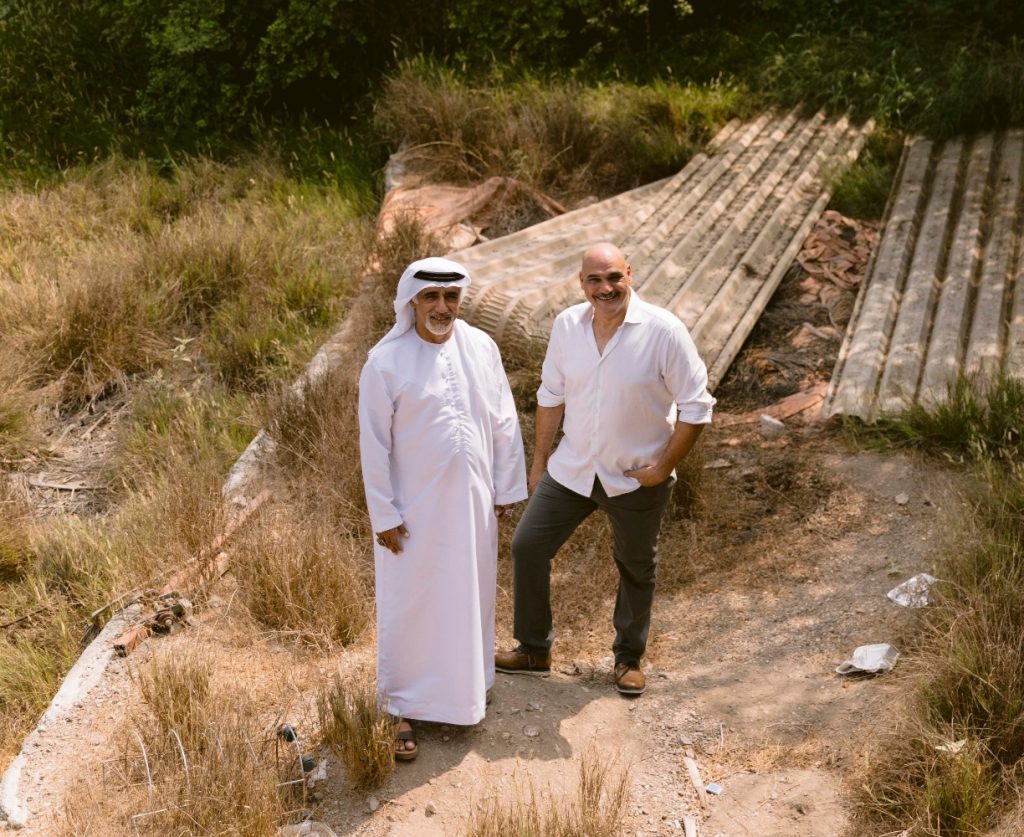
Artist Abdullah Al Saadi and curator Tarek Abou El Fetouh in 2023. Photo: Daryll Borja, courtesy of National Pavilion
UAE – La Biennale di Venezia.
Artist: Abdullah Al Saadi
Curator: Tarek Abou El Fetouh
Venue: Arsenale
What to know: A member of the Pioneer “Five,” a group of Emirati conceptual artists, Al Saadi has a long history of producing work in a variety of media, including painting, performance, and photography, all in some way inspired by his own personal experiences. Several works have repurposed stones or rocks from the natural environment to make playful assemblages or installations like Stone Slippers (2013), for which the pieces were made to represent flip flops. He has worked with Tarek Abou El Fetouh, who is a senior curator at the Sharjah Art Foundation, before on a public art project at Expo 2020 Dubai. Prior to this, Al Saadi represented the U.A.E. at Venice as part of group shows at the pavilion in 2011 and 2015.
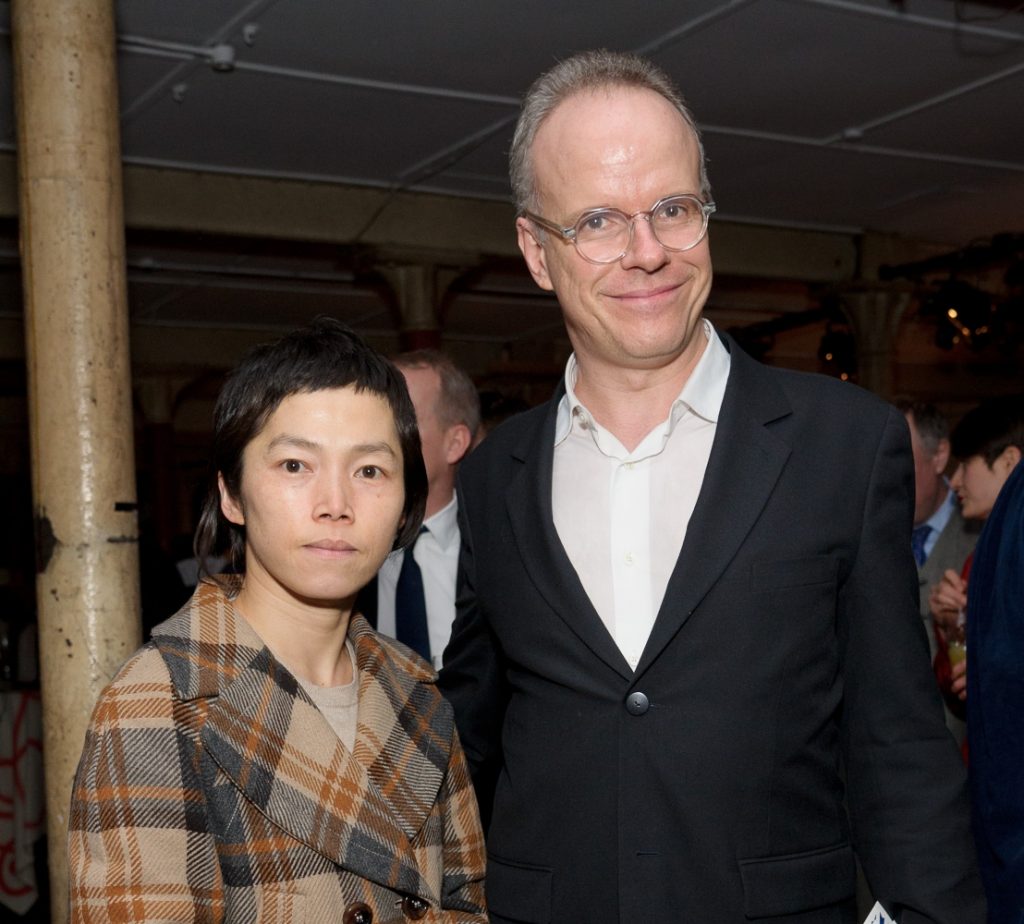
Koo Jeong A pictured with Hans Ulrich Obrist. Photo by Nick Harvey/WireImage.
Artist: Koo Jeong A
Curator: Jacob Fabricius and Lee Seol-hui
Venue: Giardini
What to know: This pavilion is, implausibly, sure to stand out for its invisible elements. Koo Jeong A has promised to take audiences on a “Korea scent journey,” with her “Odorama Cities,” works that will engage all manner of senses using not just smell but light, sound and varying temperatures.
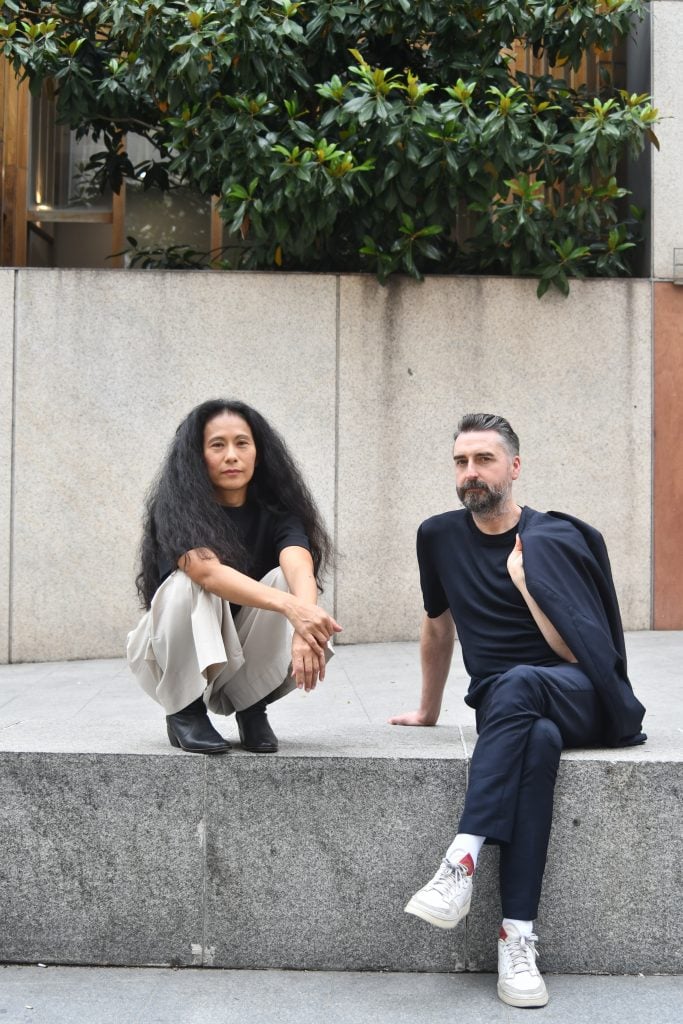
Spanish pavilion artist Sandra Gamarra and curator Agustín Pérez Rubio. Photo by Carmela García.
Artist: Sandra Gamarra
Curator: Agustín Pérez Rubio
Venue: Giardini
What to know: The Peru-born Gamarra, who currently lives and works in Madrid, already represented her native country at the 53rd Venice Biennale in 2009. Next year, she will present “Pinacoteca migrante,” which grapples with the legacy of Spanish colonization by converting the pavilion into a mock traditional Western museum complete with carpets and colored walls. Gamarra is already best known for her semi-fictional, itinerant Museum of Contemporary Art of Lima (LiMac), founded in 2002, a wry comment on the lack of cultural institutions in the Peruvian capital.
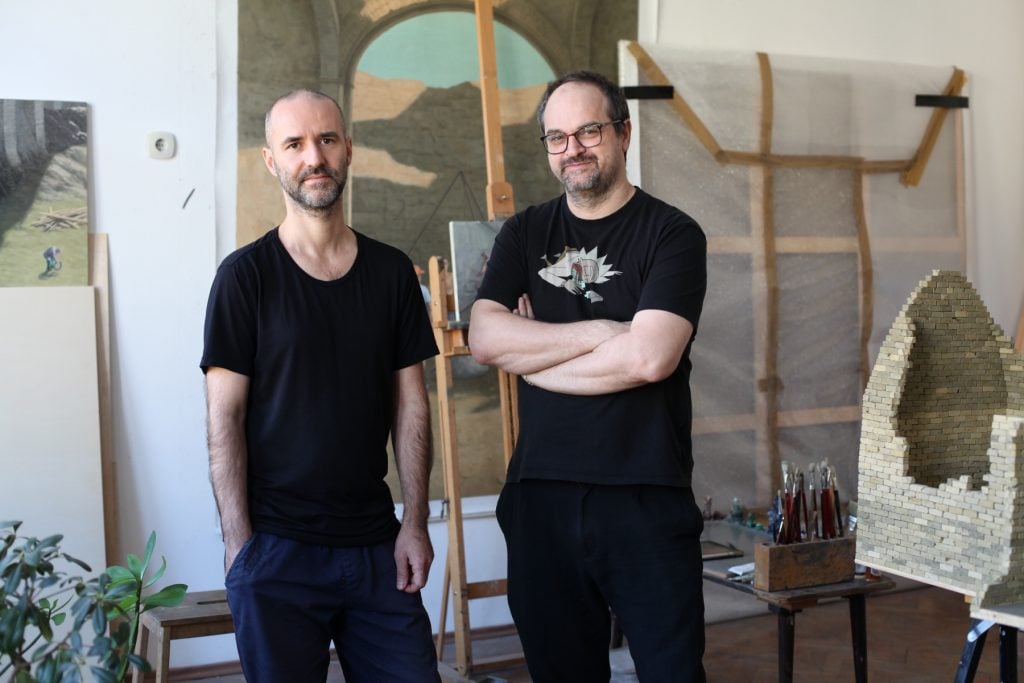
Ciprian Mureșan and Șerban Savu. Photo: Paul Stoie, courtesy of Galeria Plan B.
Artist: Serban Savu
Curator: Ciprian Muresan
Venue: Giardini and New Gallery of the Romanian Institute of Culture and Humanistic Research
What to know: The exhibition “What Work Is” takes references from Soviet propaganda to make a subtle exploration of modern day attitudes to labor and leisure. The show will include around 40 paintings that Savu has produced over the past 15 years. They contain ambiguous scenes in which strangely inert figures either work or recline.
Artist: Krasimira Butseva, Lilia Topouzova, and Julian Chehirian
Curator: Vasil Vladimirov
Venue: Dorsoduro 919
What to know: The interactive installation The Neighbours is a tribute to those that survived the communist era. The artists have recreated the homes of people they interviewed and used these intimate settings to share their stories alongside footage of two former labor camps Lovech and Belene. In this way, the project hopes to call attention to the ways in which people can be made “foreigners” in their own home country.
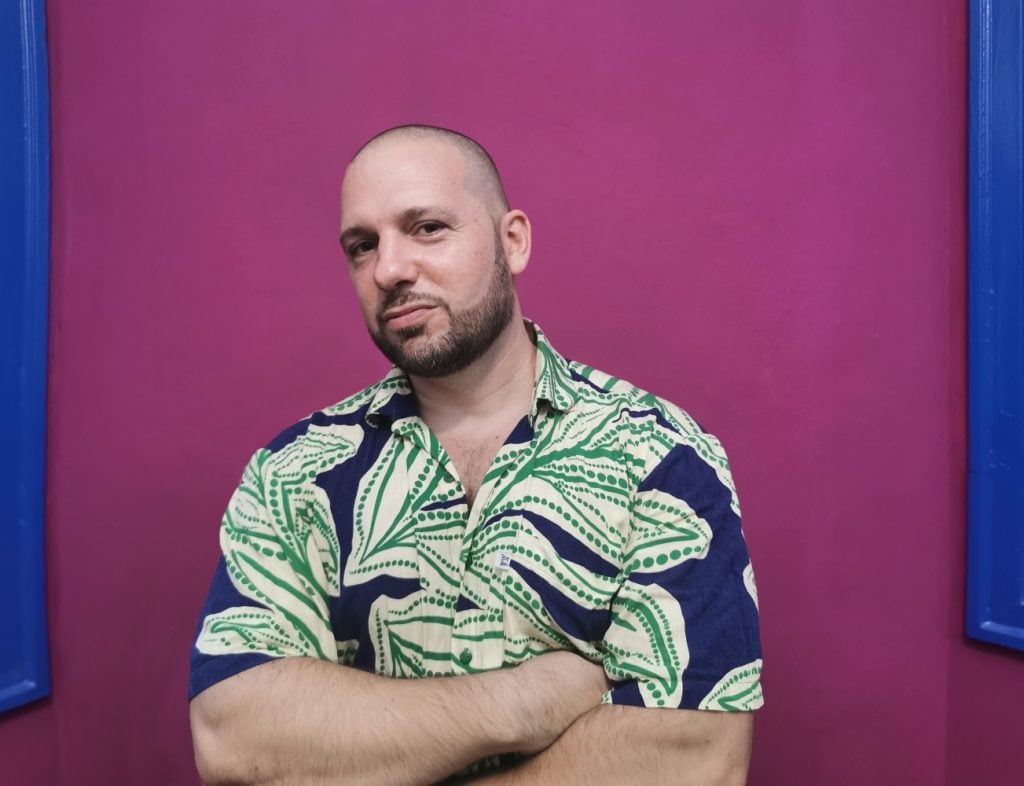
Guerreiro do Divino Amor. Photo: © Diego Paulino.
Artist: Guerreiro do Divino Amor
Curator: Andrea Bellini
Venue: Giardini
What to know: The Swiss-Brazilian artist, who is based in Rio de Janiero, is taking the opportunity of exhibiting at Venice to extend his long-running project Superfictional World Atlas, which he started in 2005. The latest iteration will be called “Super Superior Civilizations,” and the totally immersive political work will look at the complex networks of globalization and colonialism. Symbols of Western assumptions about its own racial superiority will take the form of classical ruins that lie scattered across the exhibition. Last year, the artist received his first major retrospective at the Centre d’Art Contemporain Genève, and the museum’s director will curate his pavilion.
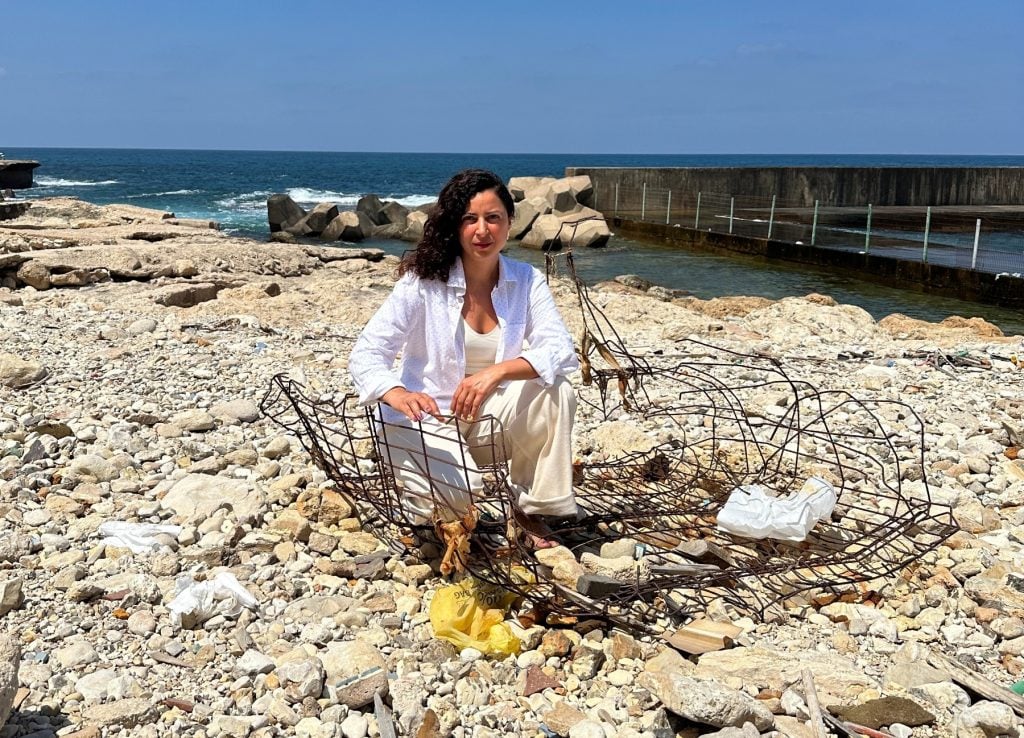
Mounira Al Solh, 2023. Photo: © Whitten Sabatini.
Artist: Mounira Al Solh
Curator: Nada Ghandour and Dina Bizri
Venue: Arsenale
What to know: The installation A Dance with her Myth contains 41 artworks, including video, sculptures, embroideries, drawings, and paintings that offer new takes on old myths, thus exploring how cultural heritage is passed down through the generations.
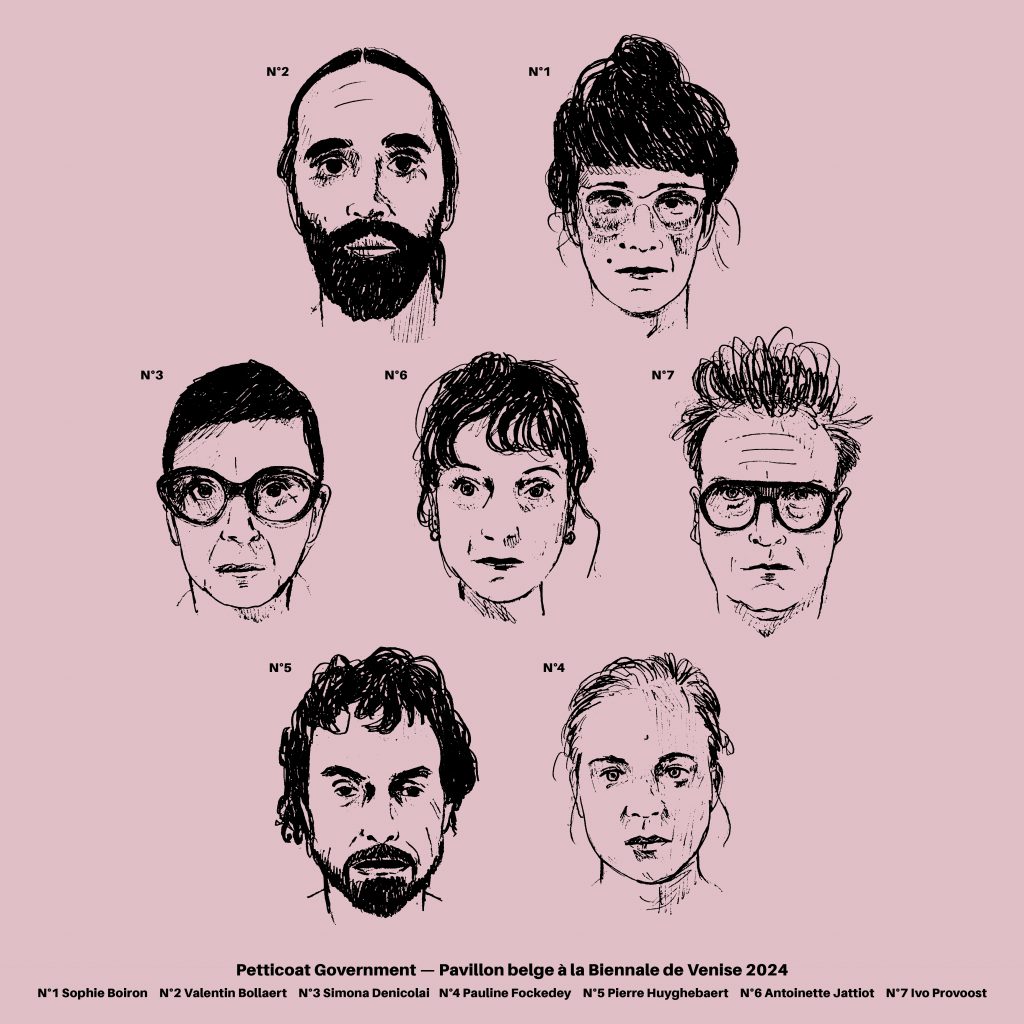
Petticoat Government. Courtesy of Petticoat Government.
Artist: Simona Denicolai and Ivo Provoost, Antoinette Jattiot, Nord, Spec uloos
Venue: Giardini
What to know: Artist duo Denicolai & Provoost, who have been creating performances, interventions and research projects together since 1997, are teaming up with Antoinette Jattiot, Nord, and Spec uloos to form a non-hierarchical collective known as Petticoat Government responsible for both art and curation. Their work will focus on mythical giants, which “are set in motion in a new story” that will have multiple chapters, according to the announcement. “Through displacement and the nomadic spirit that drives travel, bodies shape space and the powers of identification and projection that surround them.”
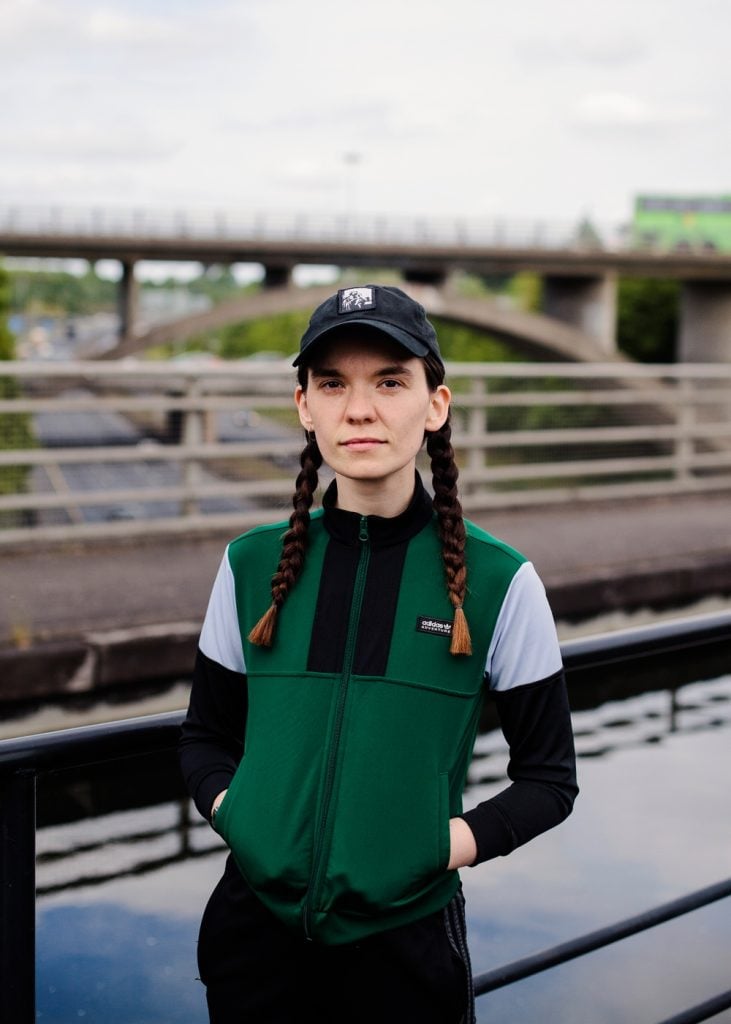
Eimear Walshe. Photo: Mark Steadman.
Artist: Eimear Walshe
Curator: Sara Greavu
Venue: Arsenale
What to know: Through performance, writings and video art, Longford-based Walshe weaves Irish history into a playful discussion of its more contemporary societal concerns, like the housing crisis, gender, and sexuality. The Land Question (2020), is a humorous video in which the artist looks at how past laws have affected land ownership in Ireland while also reframing the issue today as one of intimacy and privacy by asking the question “where the fuck am I supposed to have sex?!” The exhibition “ROMANTIC IRELAND” is an immersive installation containing a multi-channel video element that takes as a starting point the ancient Irish tradition of earth building and connects it to the current housing crisis and related class friction.
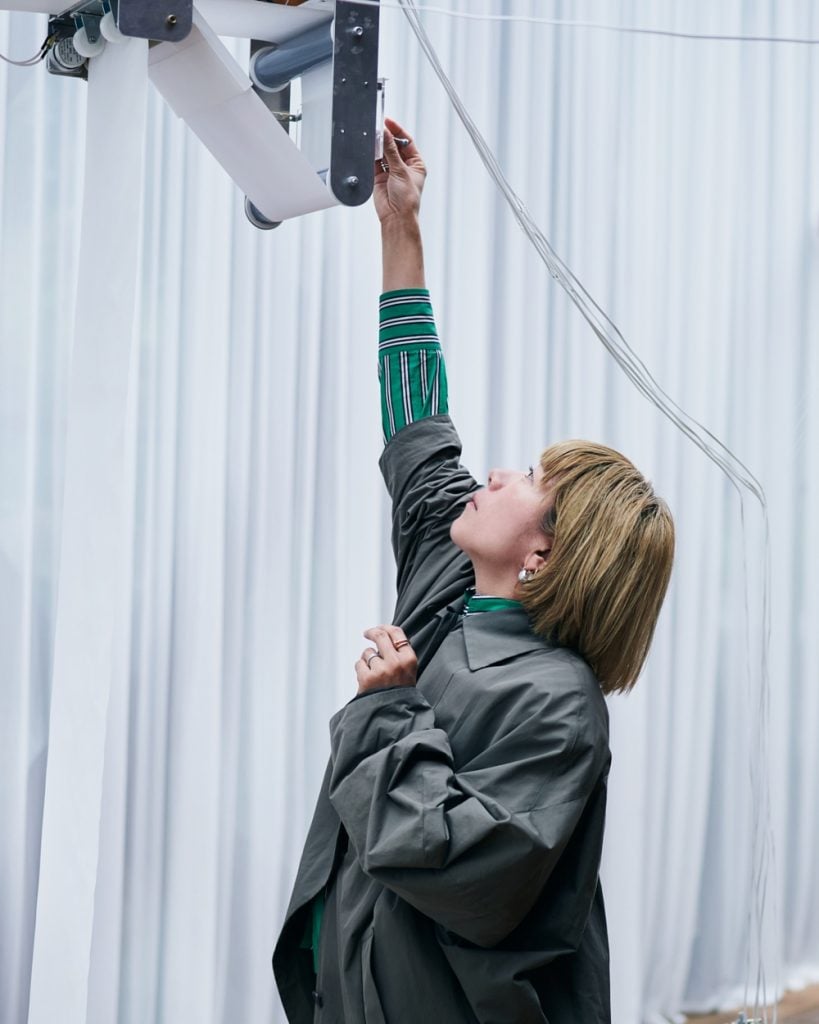
Yuko Mohri portrait. Photo: kugeyasuhide.
Artist: Yuko Mohri
Curator: Sook-Kyung Lee
Venue: Giardini
What to know: Earlier this year, the Tokyo-based artist exhibited in the 14th Gwangju Biennale, where she showed a version of her long-term project I/O, in which long rolls of printed paper are gently unspooled from suspended machines and collect dust, which in turn triggers autonomous feather dusters into action. Gwangju’s artistic director Sook-Kyung Lee will now curate her pavilion at Venice. Not much has been revealed yet, but Mohri is known for introducing sound to her kinetic installations, which make use of everyday material in subtle configurations.
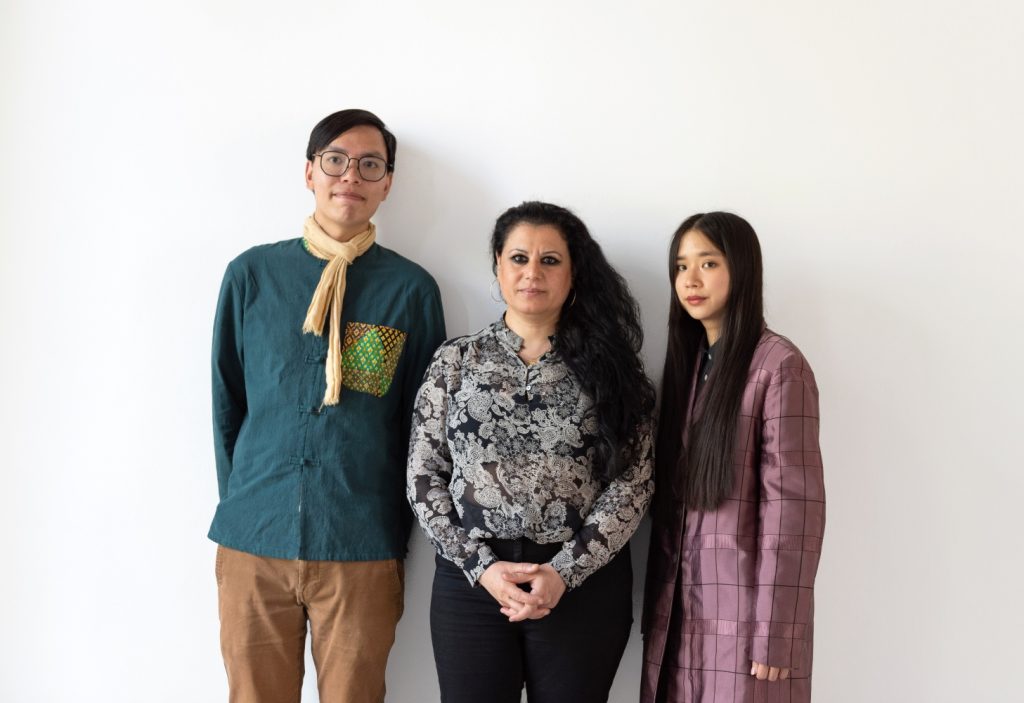
From left: Tze Yeung Ho (Norway), Kholod Hawash (Finland), Lap-See Lam (Sweden). Photo: Robert Schittko.
Artist: Lap-See Lam, Kholod Hawash, and Tze Yeung Ho
Curator: Asrin Haidari
Venue: Giardini
What to know: Taking its turn to host, Sweden, and more specifically the Moderna Museet, is at the helm of next year’s Nordic Pavilion. Swedish installation artist Lap-See Lam has been selected to come up with the concept for the Gesamtkunstwerk, which is inspired by the highly theatrical Cantonese Opera to “take us on a journey into the world of fairy tales, where supernatural beings turn the logic of the real world on its head.” She will be joined by the Finland-based Iraqi textile artist Kholod Hawash and Norwegian composer Tze Yeung Ho.
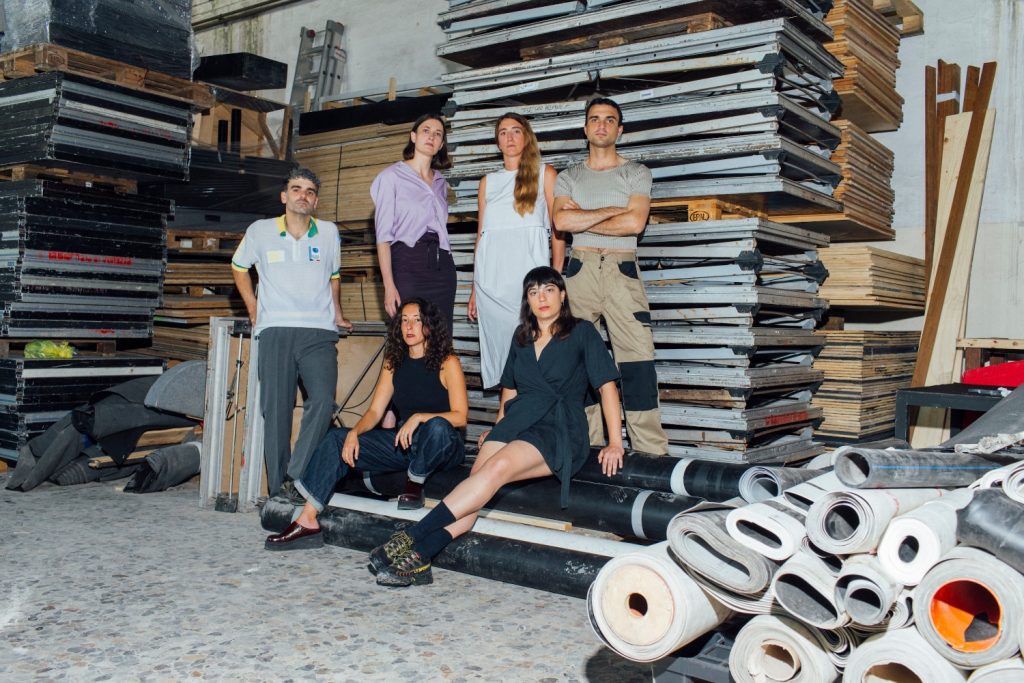
Luxembourg Pavilion. Photo: © Alessandro Simonetti.
Artist: Andrea Mancini and Every Island
Curator: Joel Valabrega
Venue: Arsenale
What to know: For this collaborative exhibition “A Comparative Dialogue Act,” Mancini and Every Island have decided to share the pavilion with a troupe of guest artists-in-residence who all work with the medium of sound. Collectively, the participants will generate new performances on site that will later be released as an EP. This joint effort seeks to disrupt ideas about individual artistic authorship.
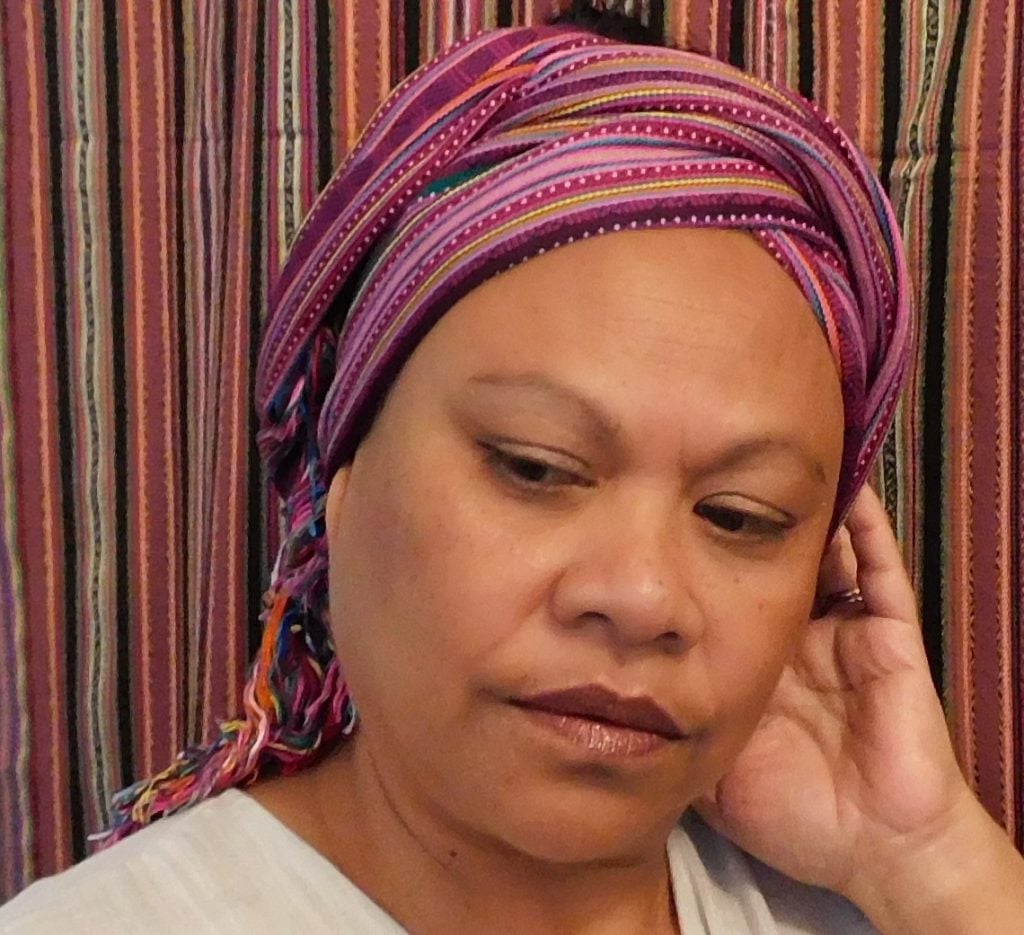
Maria Madeira. Photo: Dennis Phillip Irwin.
Artist: Maria Madeira
Curator: Natalie King
Venue: Spazio Ravà San Polo 1099
What to know: For Timor-Leste’s first pavilion at Venice, the Dili-based artist Maria Madeira will present Kiss and Don’t Tell, a site-specific installation that will begin with a performance during which Madeira will kiss the walls, leaving behind lipstick markings, and sing traditional songs in the Indigenous language Tetun. “In my song, I urge all of us to unite with our mother land, to co-exist so all our tears turn into streams to wash away the pain and heal the earth,” she said in a press statement.
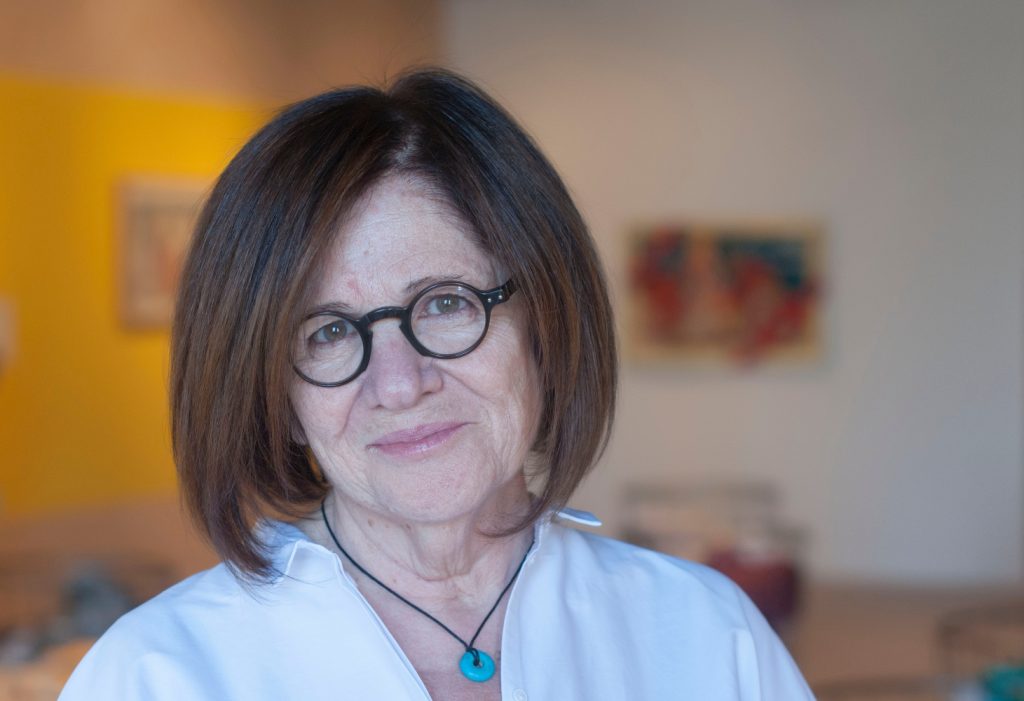
Gülsün Karamustafa. Photo: Muhsin Akgün.
Artist: Gülsün Karamustafa
Curator: Esra Sarigedik Öktem
Venue: Arsenale
What to know: The Ankara-born, Istanbul-based artist has used a wide variety of media to explore the changing socio-political climate of Turkey as it has modernized over the course of her lifetime. Born in 1946, she has been involved in activism since she was a student during the 1968 revolts. Her long-standing themes of migration, displacement and exile dovetail nicely with the main exhibition’s theme of “Foreigners Everywhere.” Her exhibition “Hollow and Broken: A State of the World” will present sculptures made from found objects that reflect on profoundly tragic current events like war, forced migration, and the climate crisis.

Portraits of the members of Endrosia Collective by Andreas Andronicou. (2022). Image courtesy of Endrosia Collective.
Artist: LLC (Peter Eramian and Emiddio Vasquez), Endrosia (Alexandros Xenophontos, Andreas Andronikou, Doris Mari Demetriadou, Irini Khenkin, Marina Ashioti, Niki Charalambous, and Kyriaki Rafaelia Tsiridou) and Haig Aivazian.
Curator: This project “breaks away from the conventional model of a single curator and artist format” in favor of “decentralized curation.”
Venue: Arsenale
What to know: A large group consisting of artist duo LLC, artist collective Endrosia and artist Haig Aivazian have teamed up for the task of representing Cyprus next year. Their proposal, called “On a wildflower-lined gravel track off a quiet thoroughfare…” was selected unanimously by a special governmental advisory committee over 22 other responses to an open-call. So far, the group has stated that “taking ‘ghosting’ as a methodological entry point into a larger network of social realities and ghostly matters, we will refocus them onto local histories and mythologies, and collaboratively diffract through them the themes to which our practices are committed: decoloniality, extractivism, and development, technophilia and social justice.”
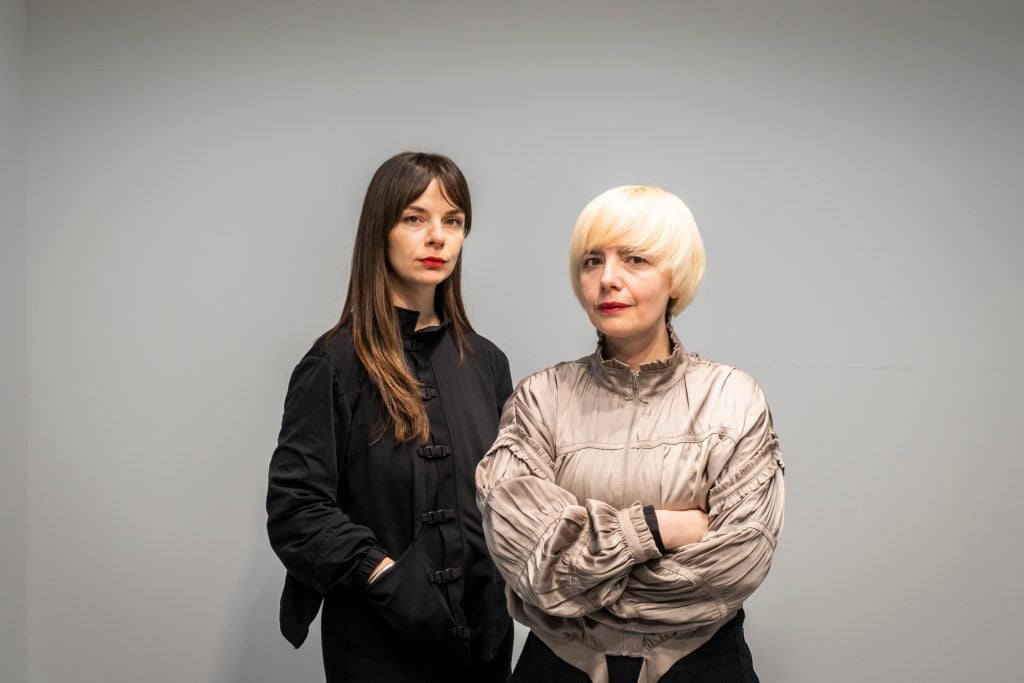
Doruntina Kastrati and Eremire Krasniqi. Photo: Agon Dana.
Artist: Doruntina Kastrati
Curator: Erëmirë Krasniqi
Venue: Museo Storico Navale
What to know: Kastrati’s large-scale installations bring the focus back onto the body, and this thread will carry through into The Echoing Silences of Metal and Skin, which will examine the unique struggles of women in the workplace. While abundundant low-paid factory work in Kosovo has allowed women some degree of financial independence, it also suspends them in a state of economic vulnerability and reinforces age-old gender roles. These issues will be addressed through an abstract study of the “embodied characteristics” of everyday materials.
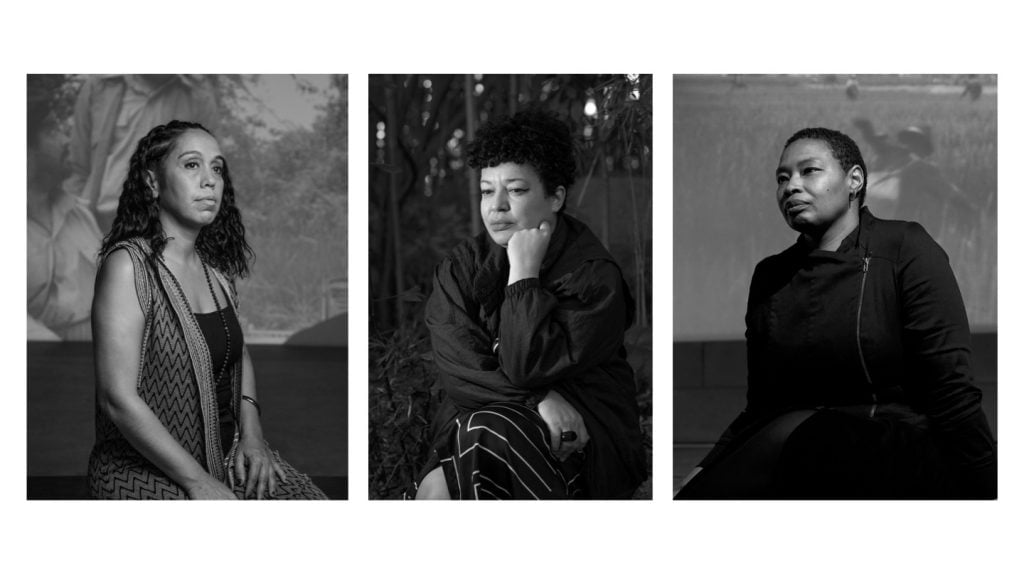
L: Mónica de Miranda. Photo: © courtesy of Jahmek Contemporary Art., C: Vânia Gala. Photo: © Rui Sergio Afonso., R: Sónia Vaz Borges. Photo: © Argenis Apolinario.
Artist: Mónica de Miranda, Vânia Gala, and Sónia Vaz Borges
Curator: Mónica de Miranda, Vânia Gala, and Sónia Vaz Borges
Venue: Palazzo Franchetti
What to know: Three artist-curators have come together under the collective banner of GREENHOUSE, with the explicit intention of challenging the division between curator and artist. The group will create a “Creole Garden,” a multidisciplinary “living archive” filled with artworks as well as “discursive and performative actions.”
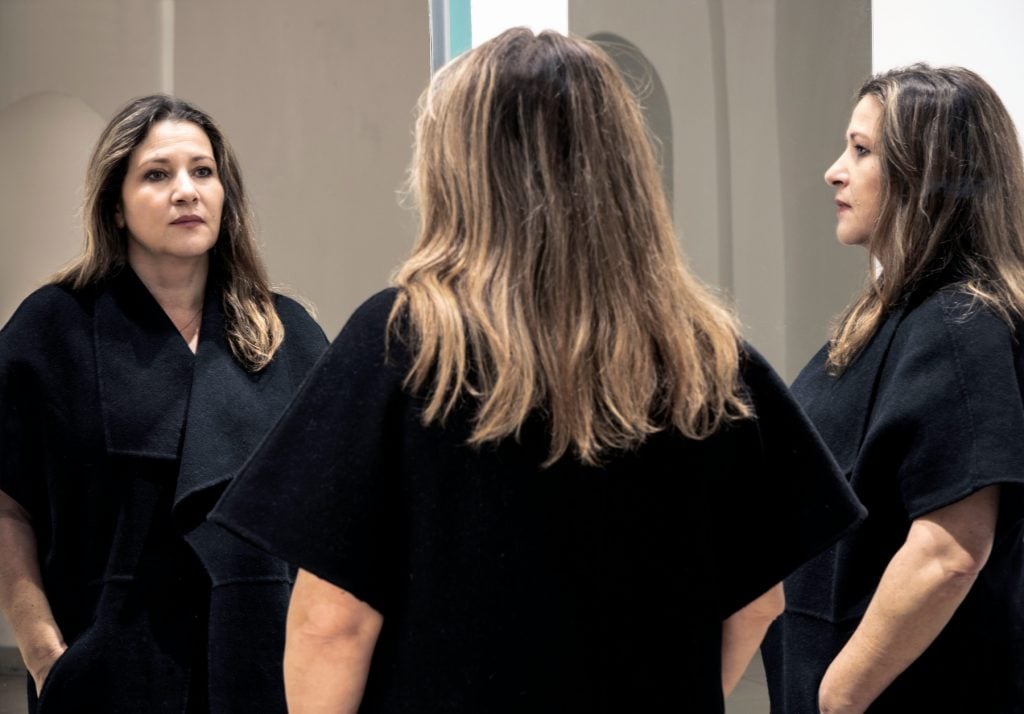
Slavica Janešlieva, Inter Spem et Metum (2024) (detail). Photo: Robert Jankuloski.
Artist: Slavica Janešlieva
Curator: Dr. Ana Frangovska
Venue: Scuola dei Laneri, Fondamenta del Gaffaro
What to know: Known for her experimental transmedial practice, Janešlieva will present INTER SPEM ET METUM (Between hope and fear), a spatial multidimensional installation that create an intentionally unfamiliar and strange environment through the use of neon signage, mirrors, feathers, and video projection.
More Trending Stories:
A Norwegian Dad Hiking With His Family Discovered a Rock Face Covered With Bronze Age Paintings
An Israeli First-Grader Stumbled on a 3,500-Year-Old Egyptian Amulet on a School Trip